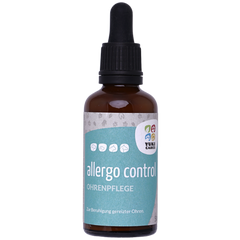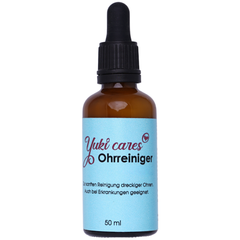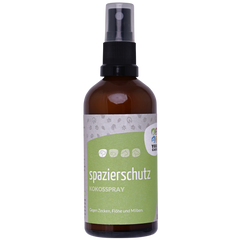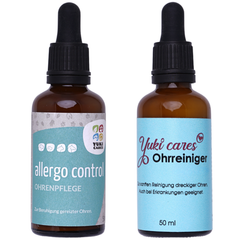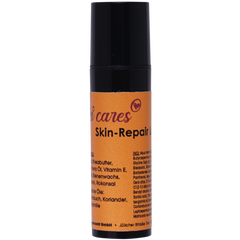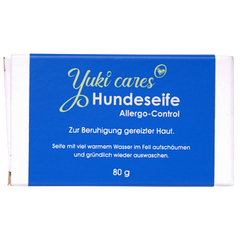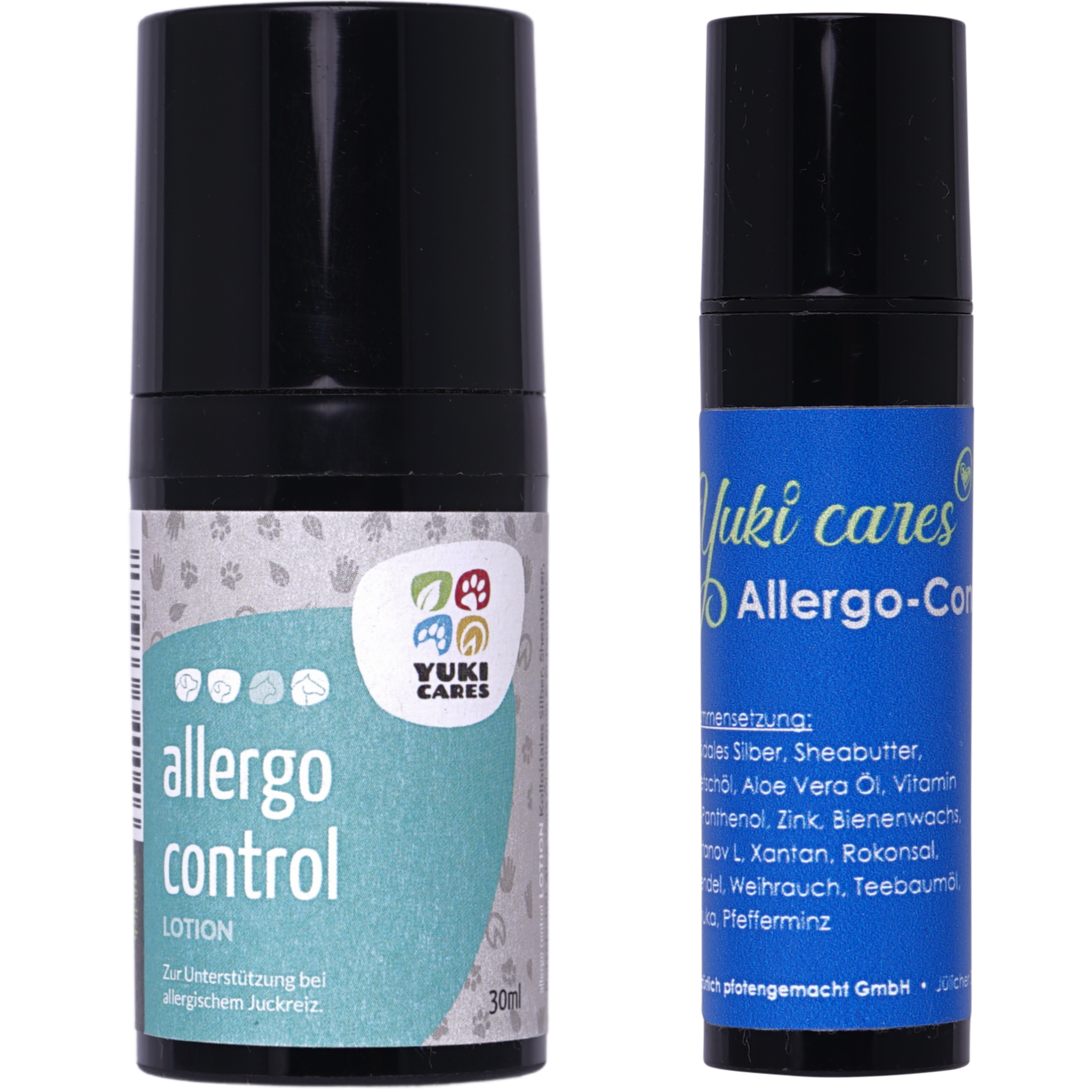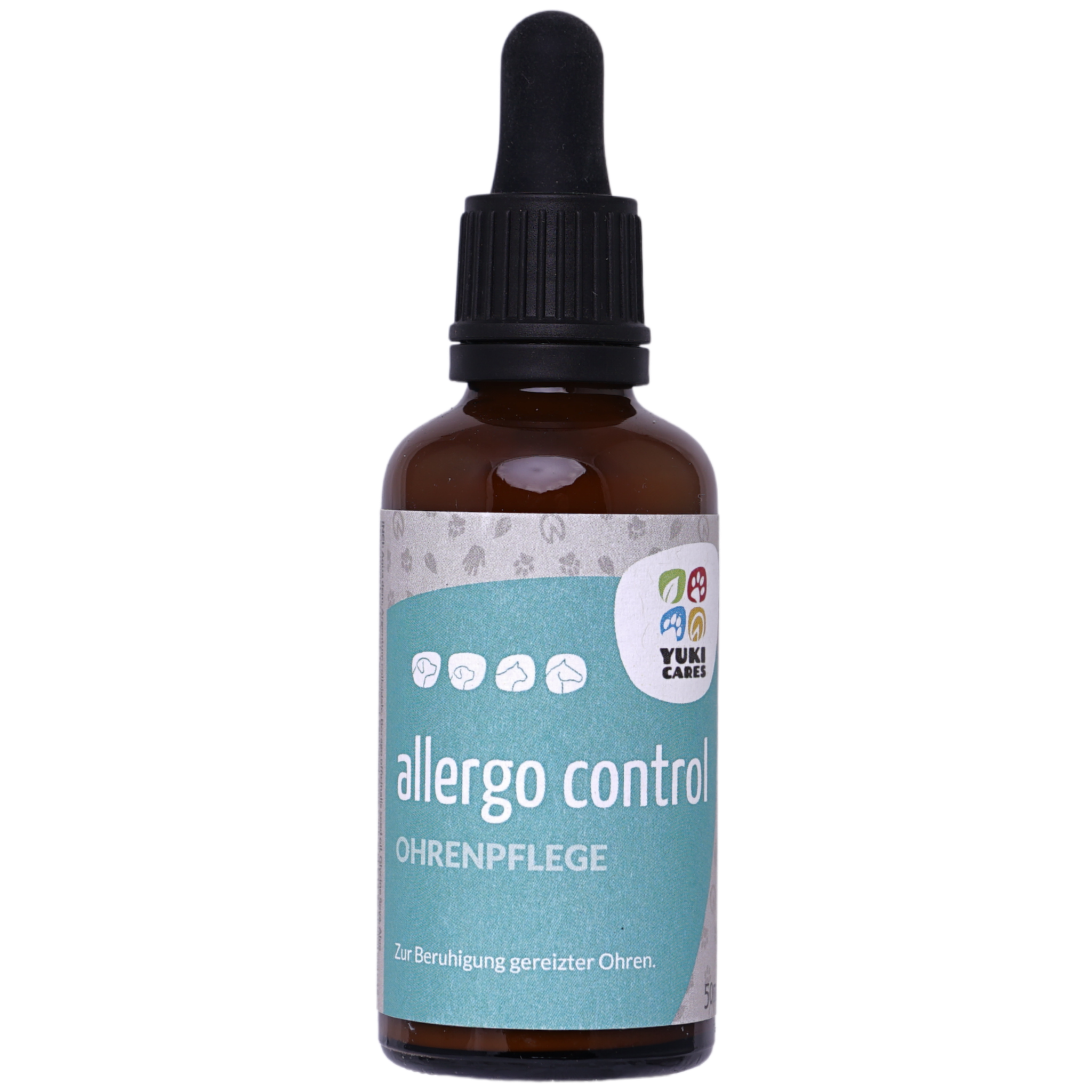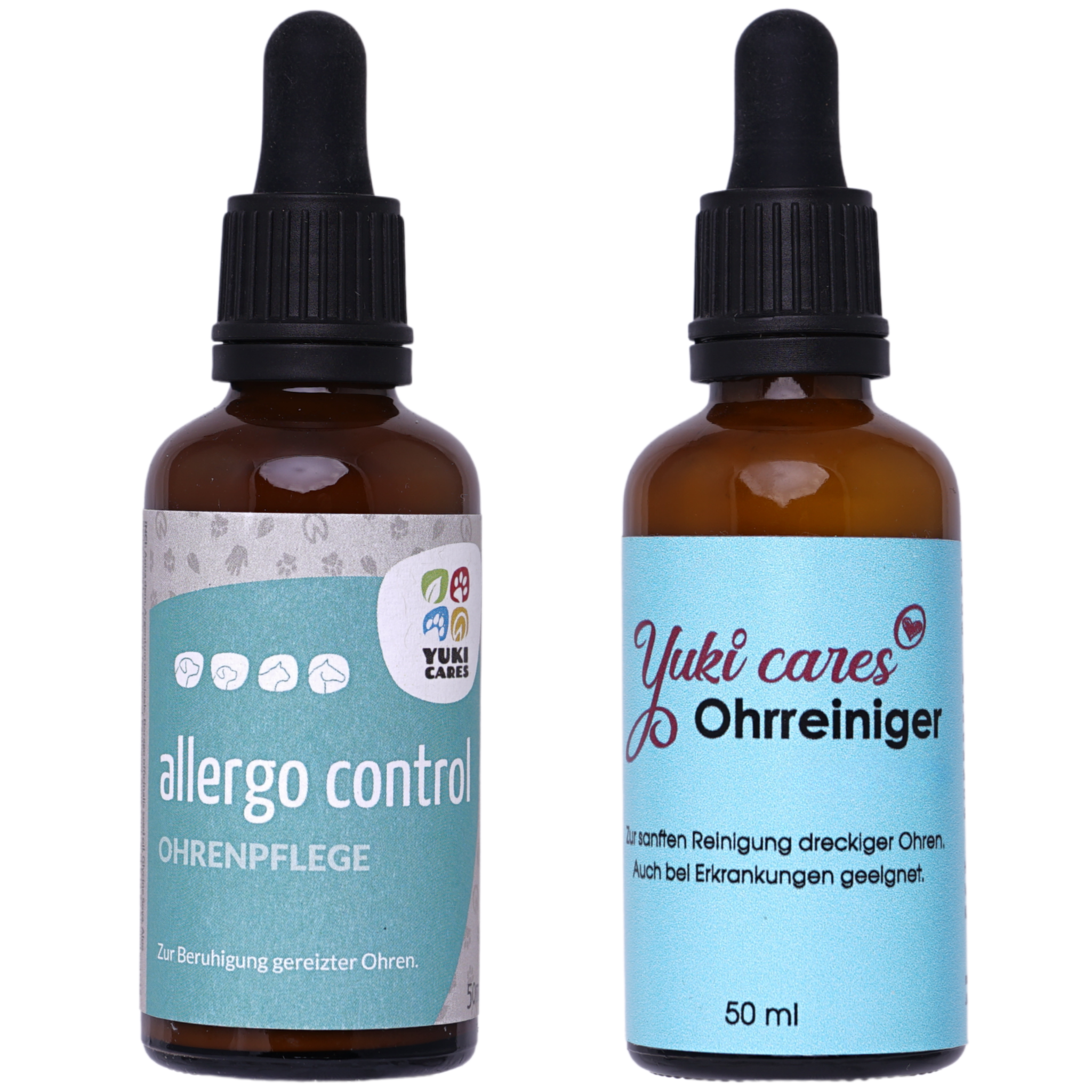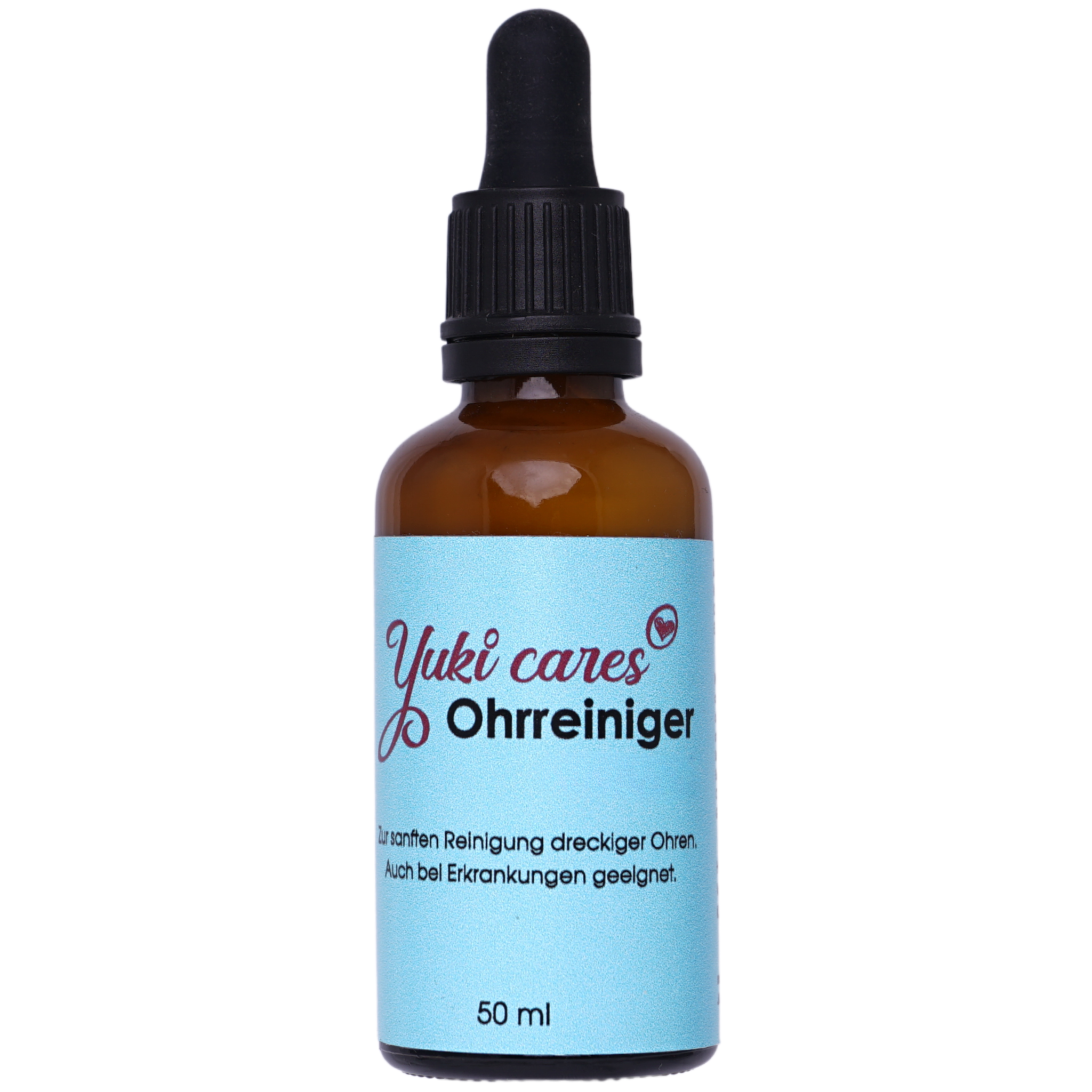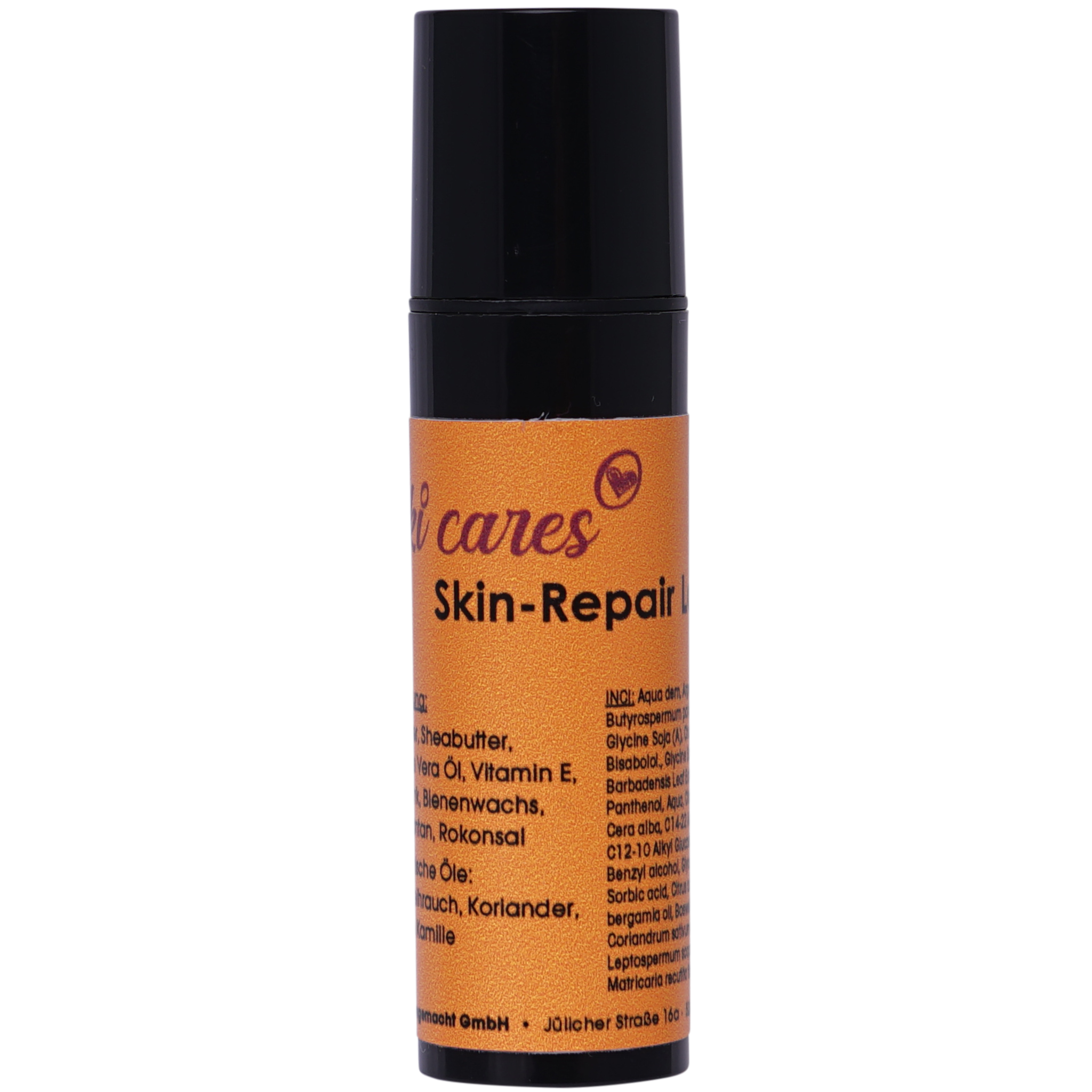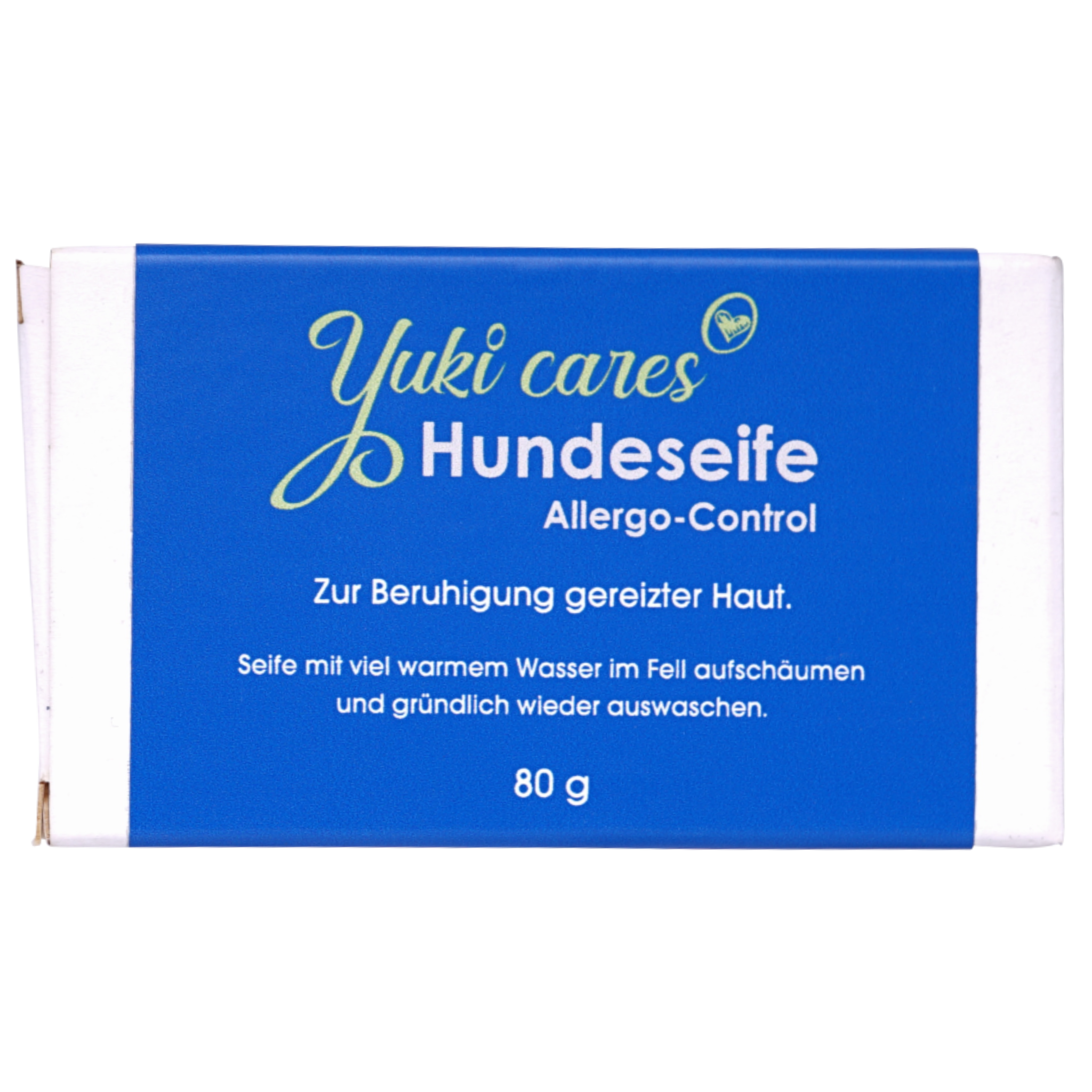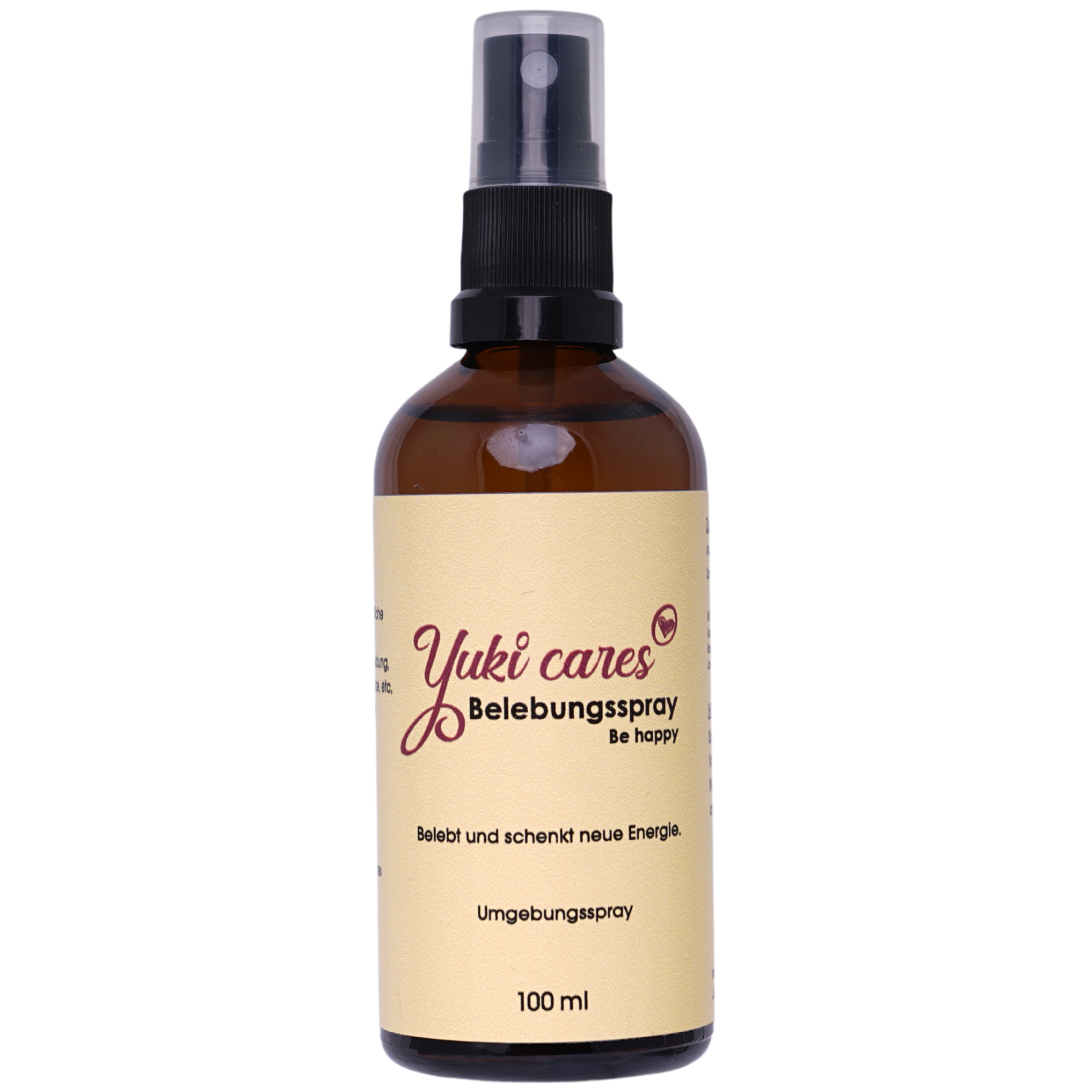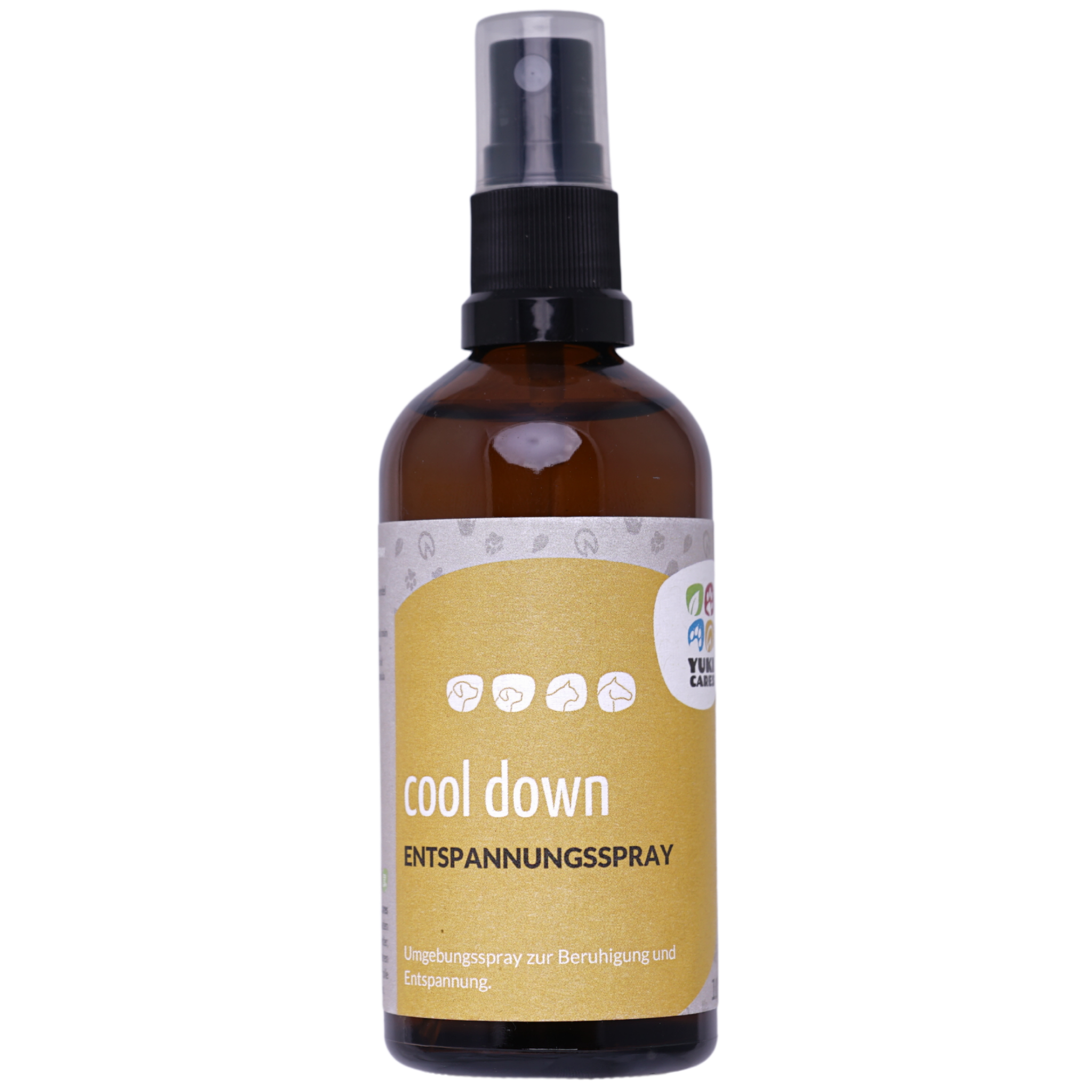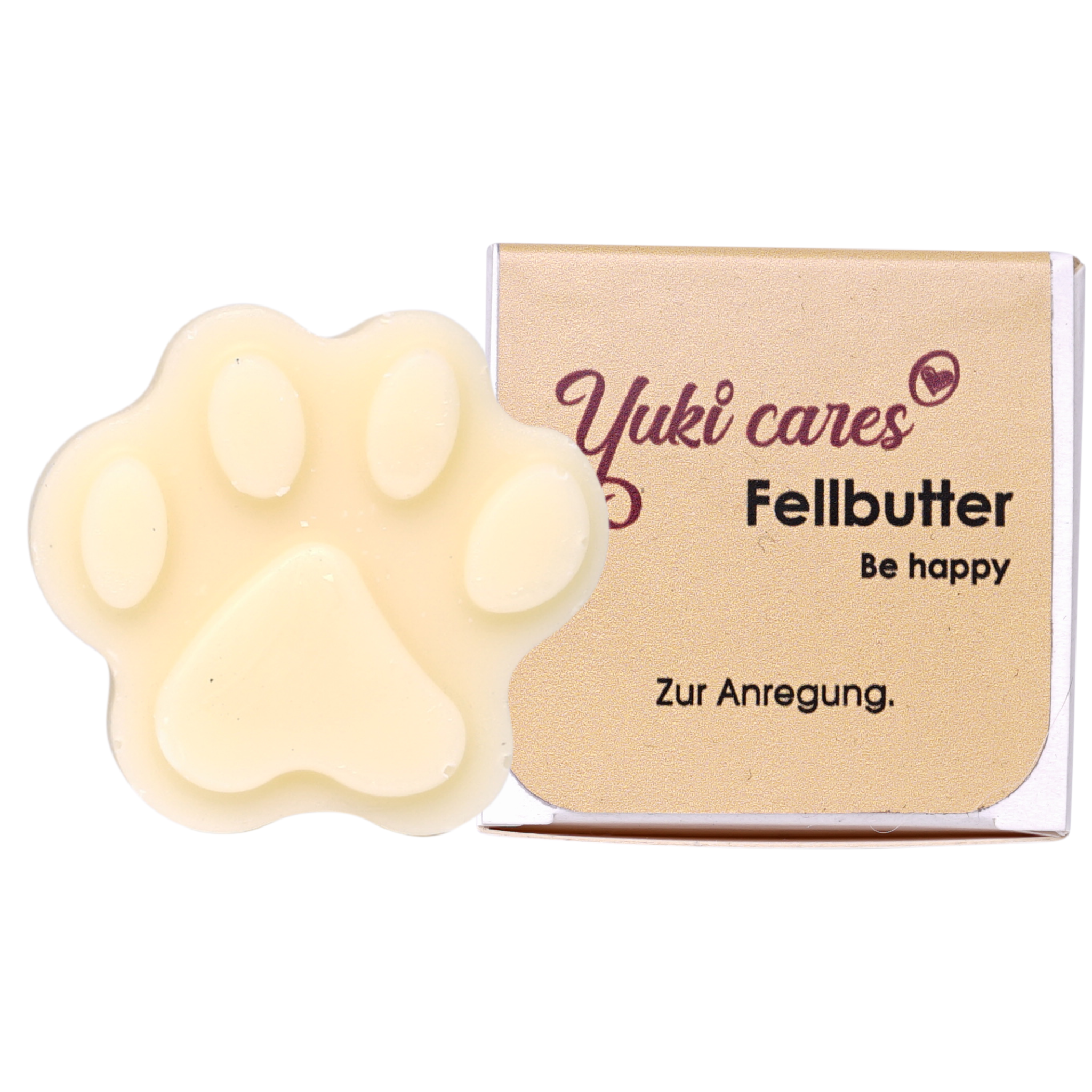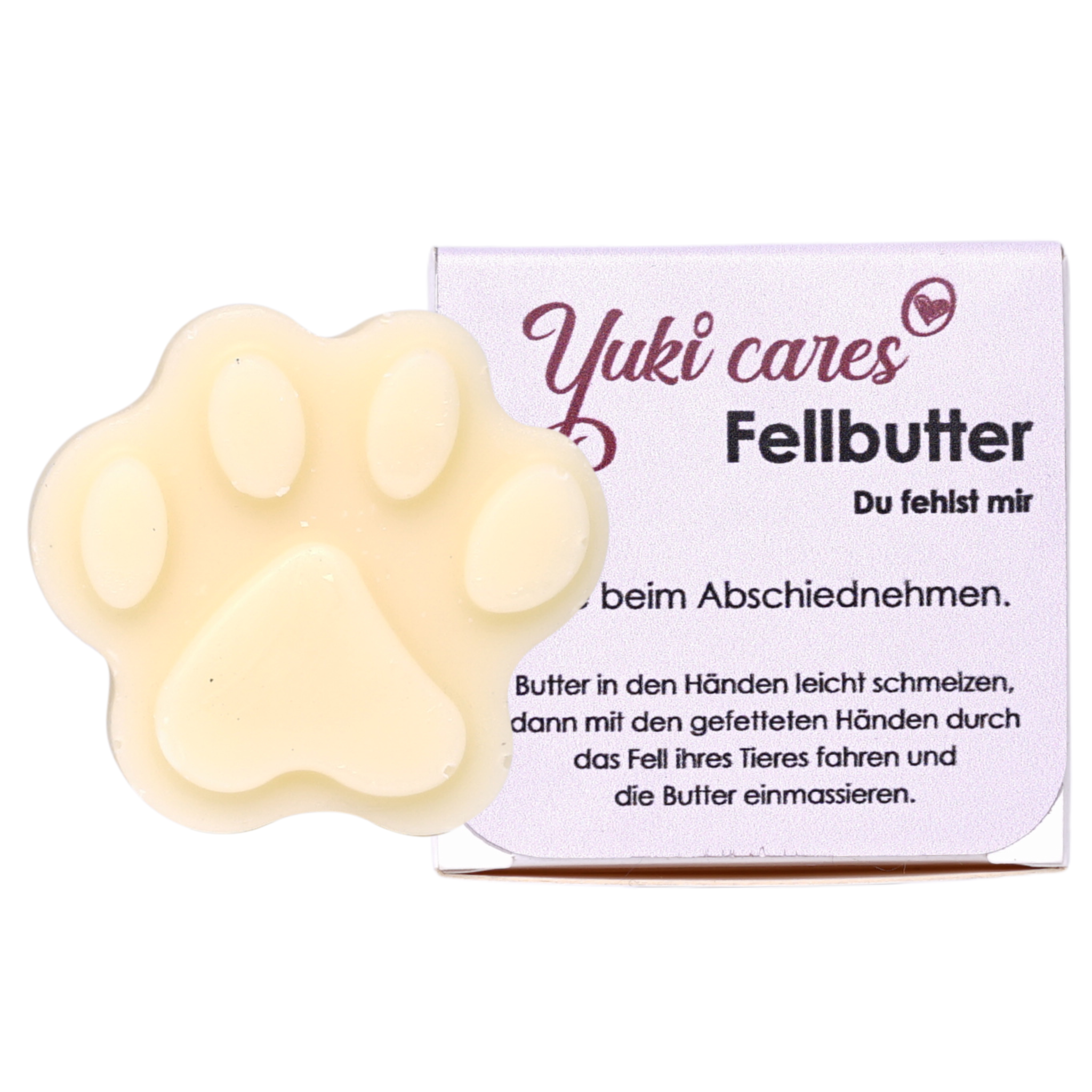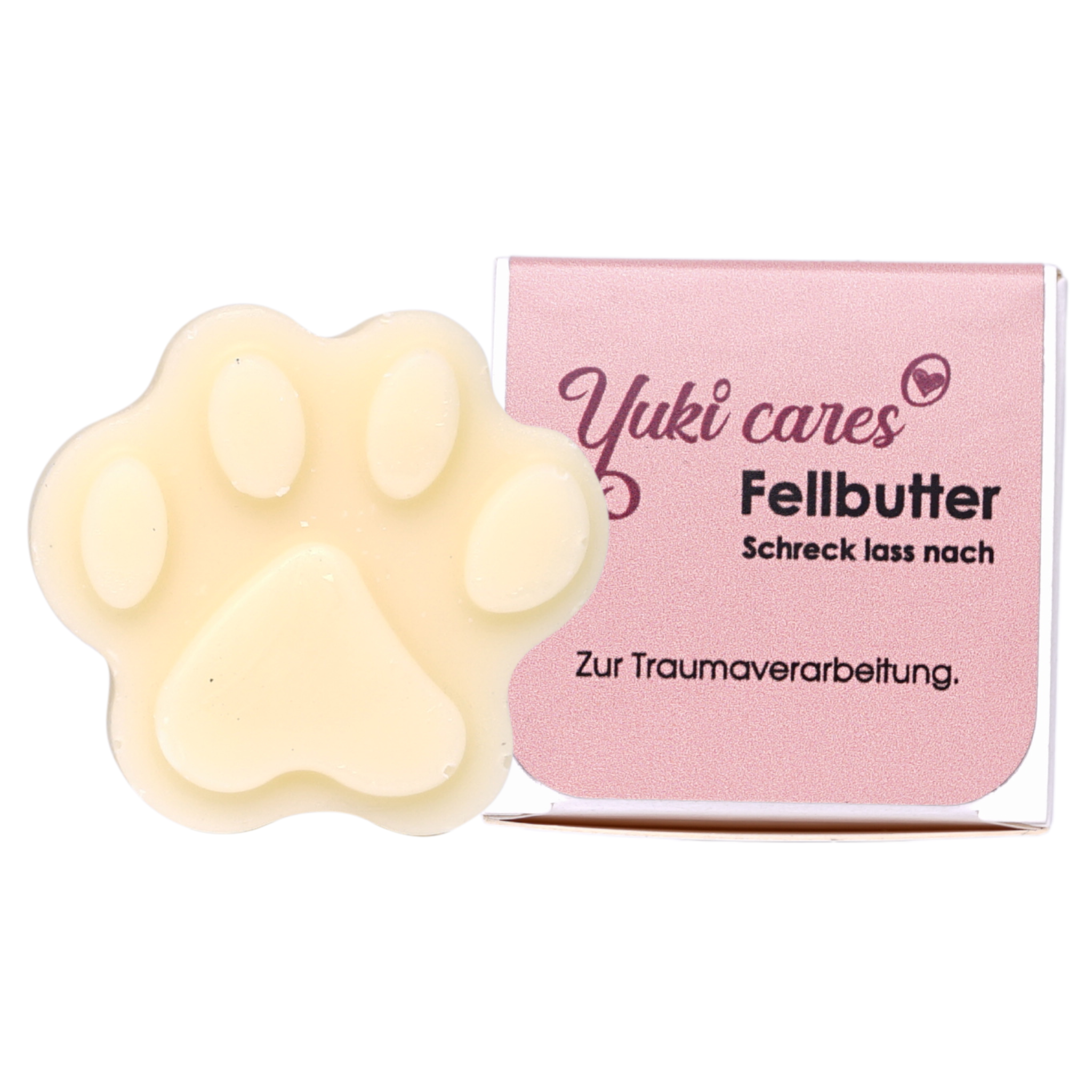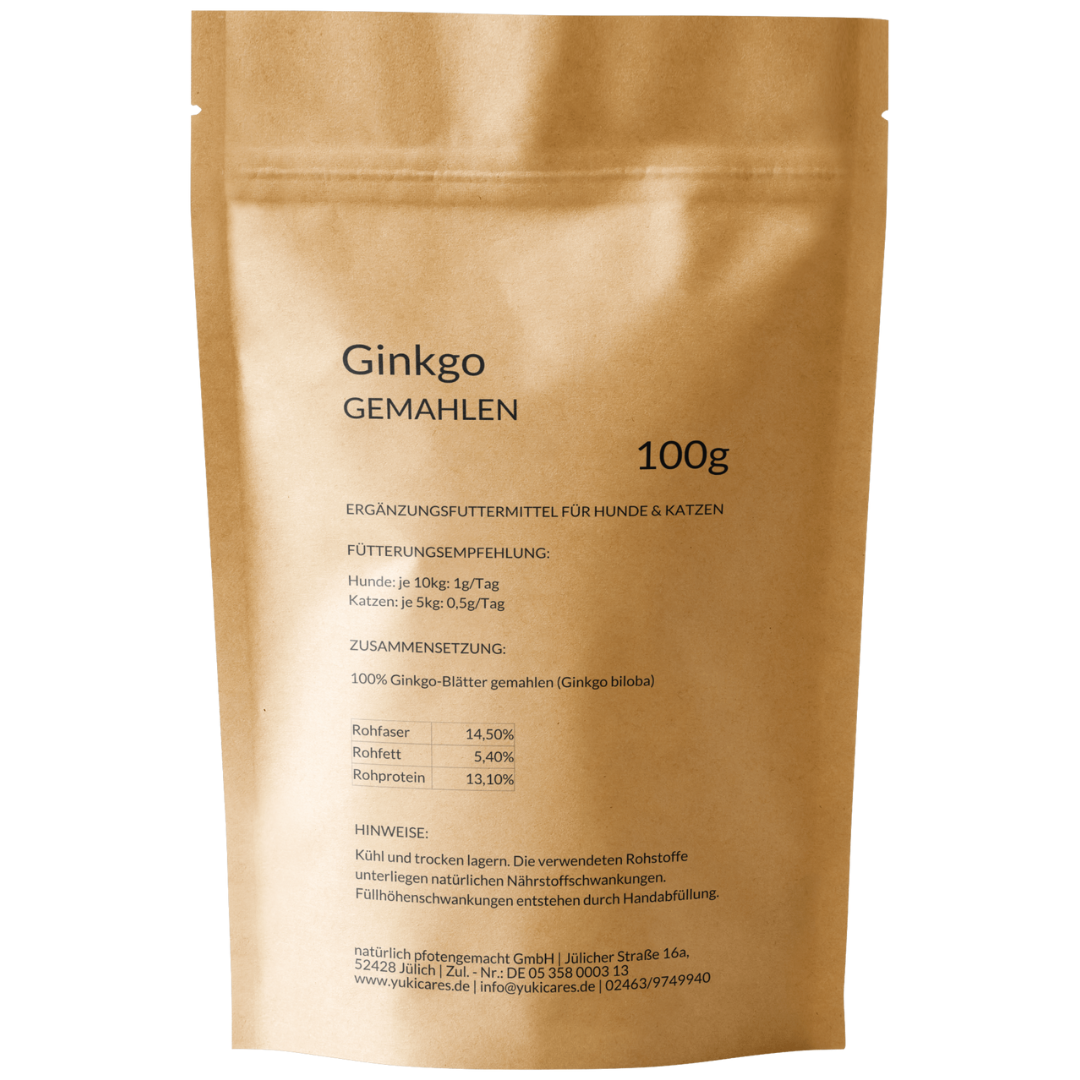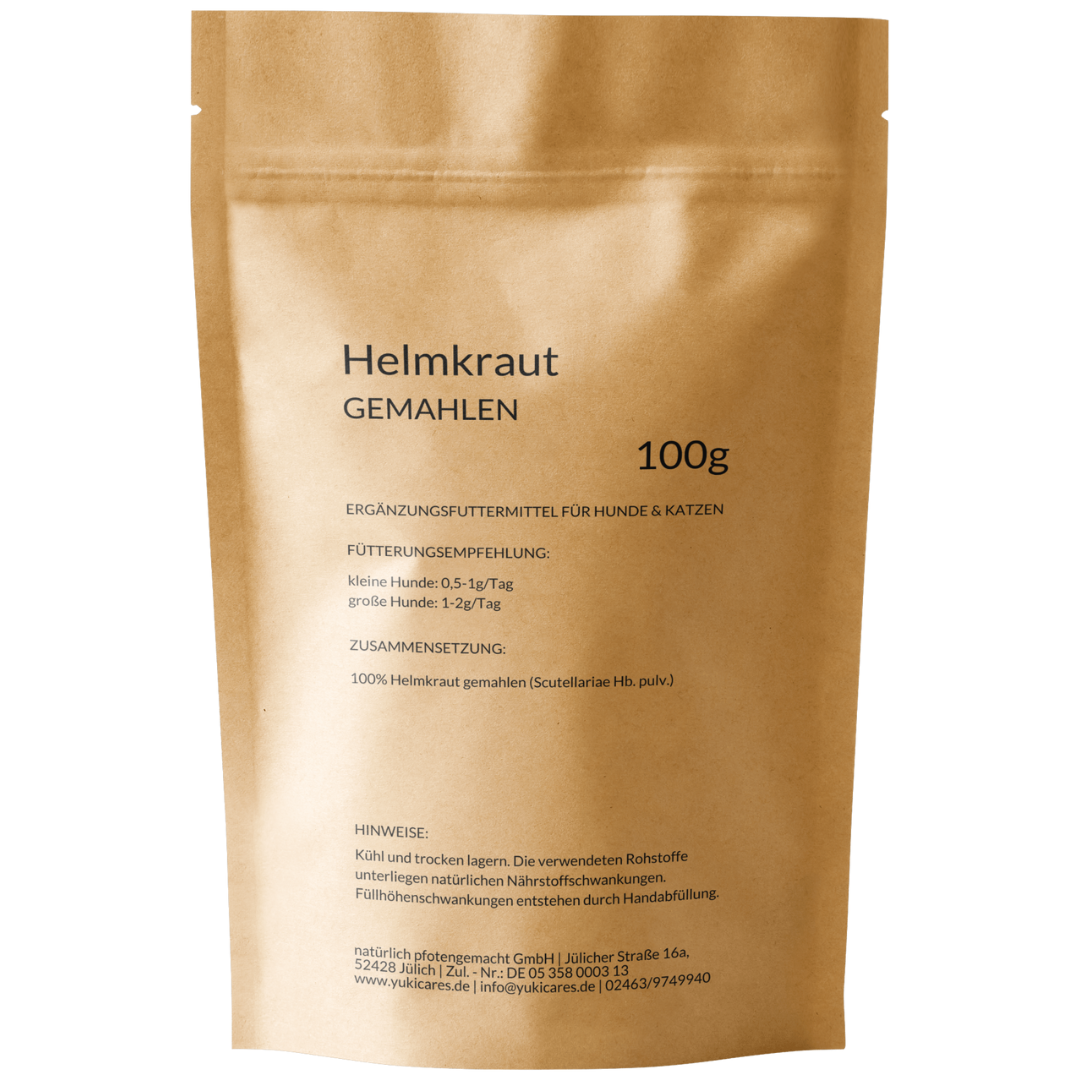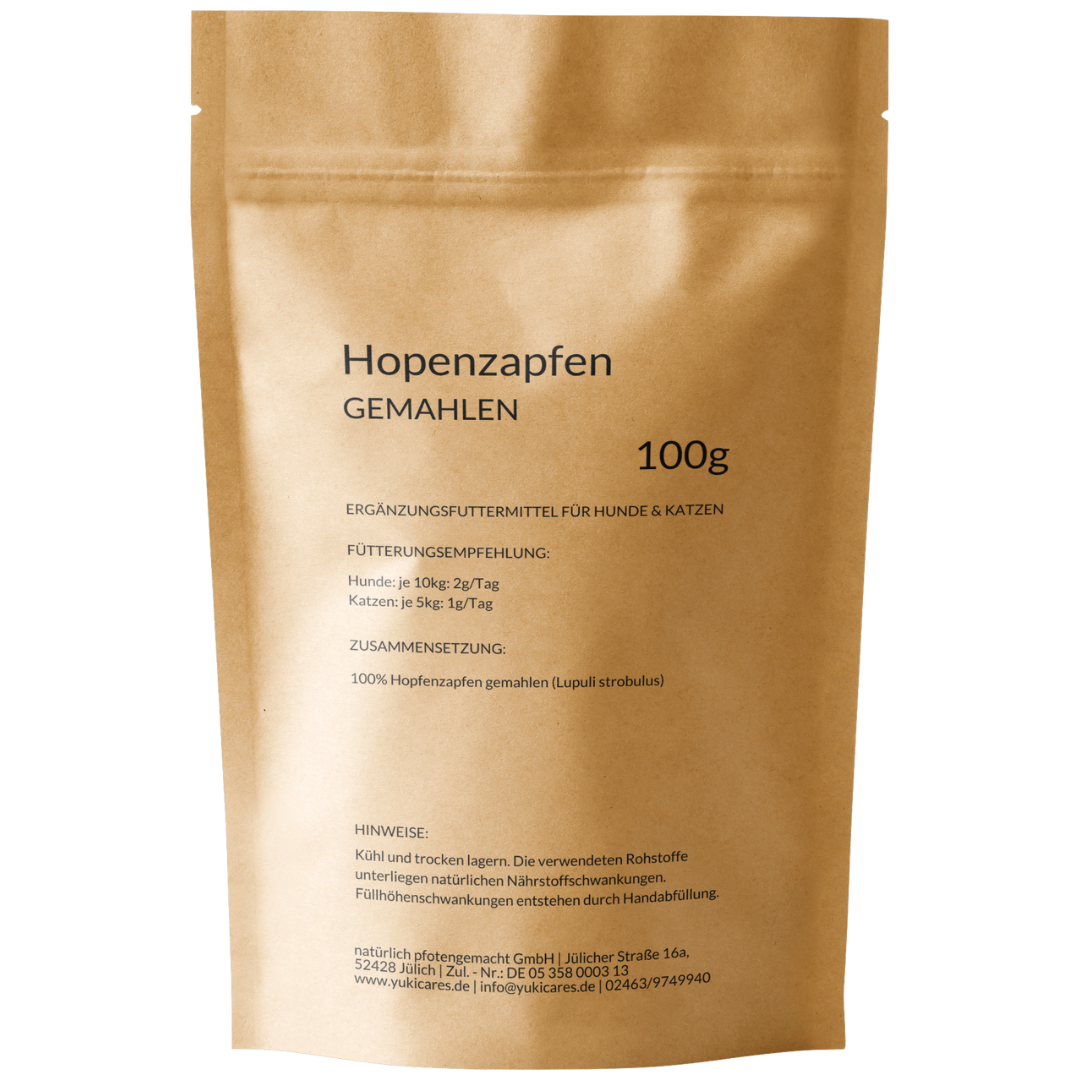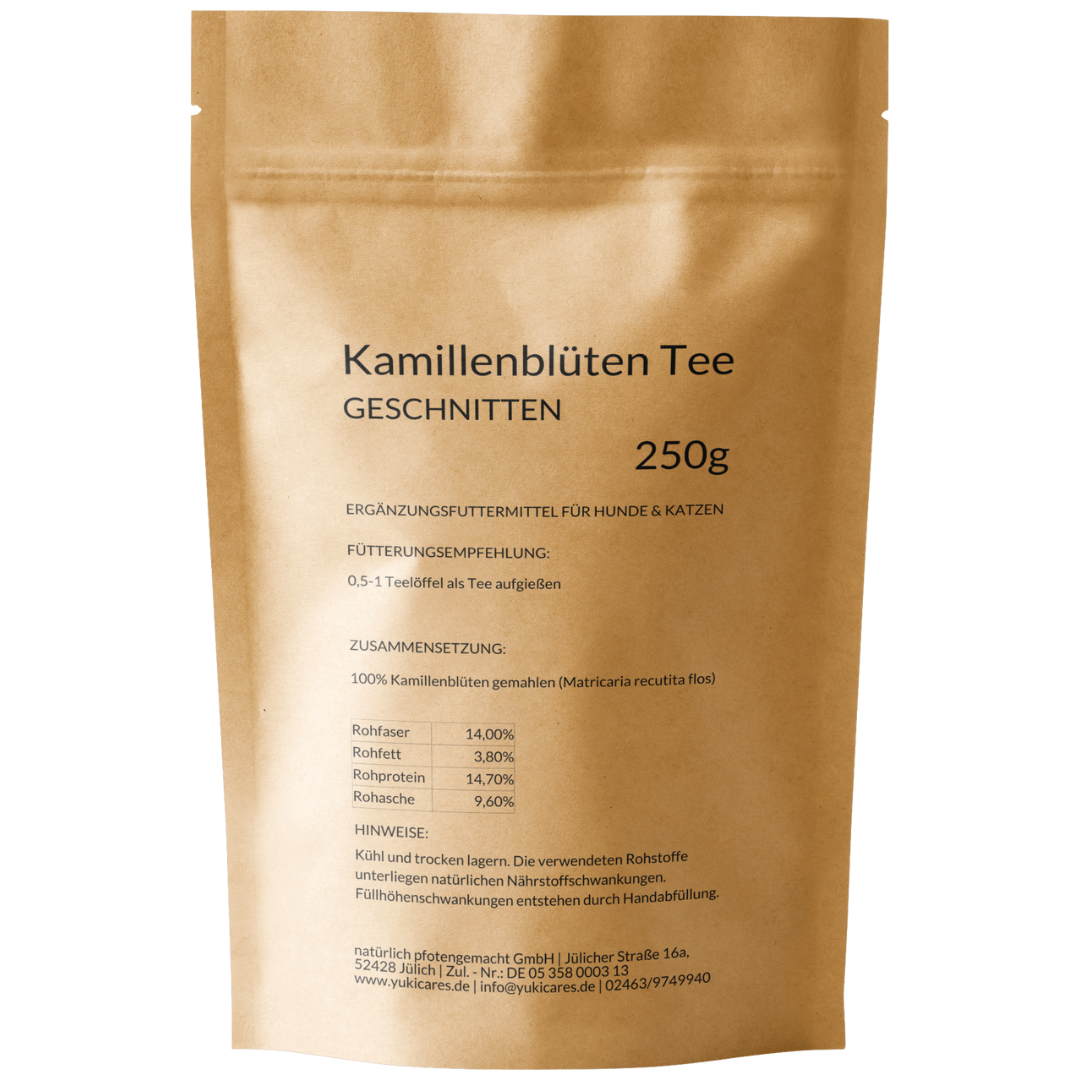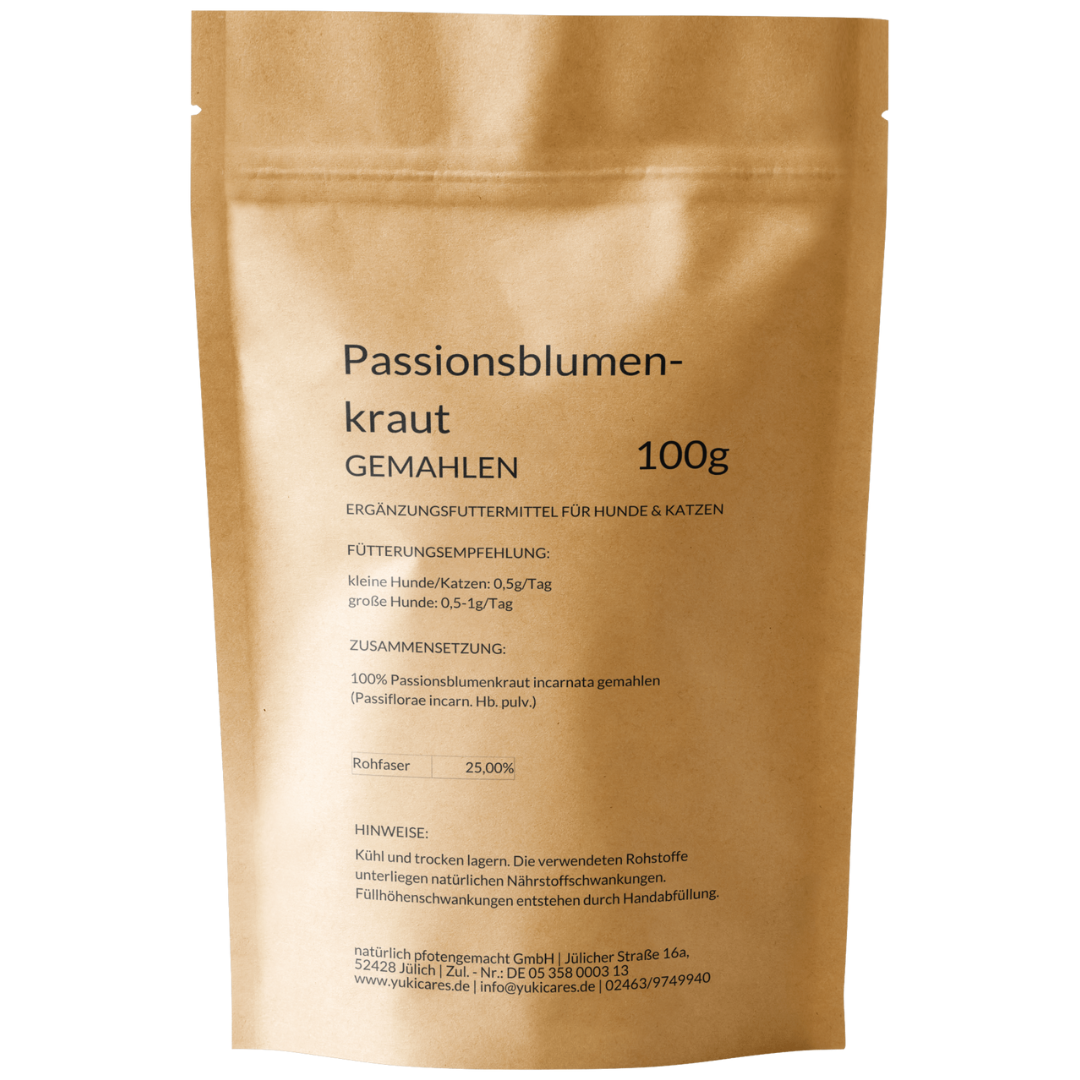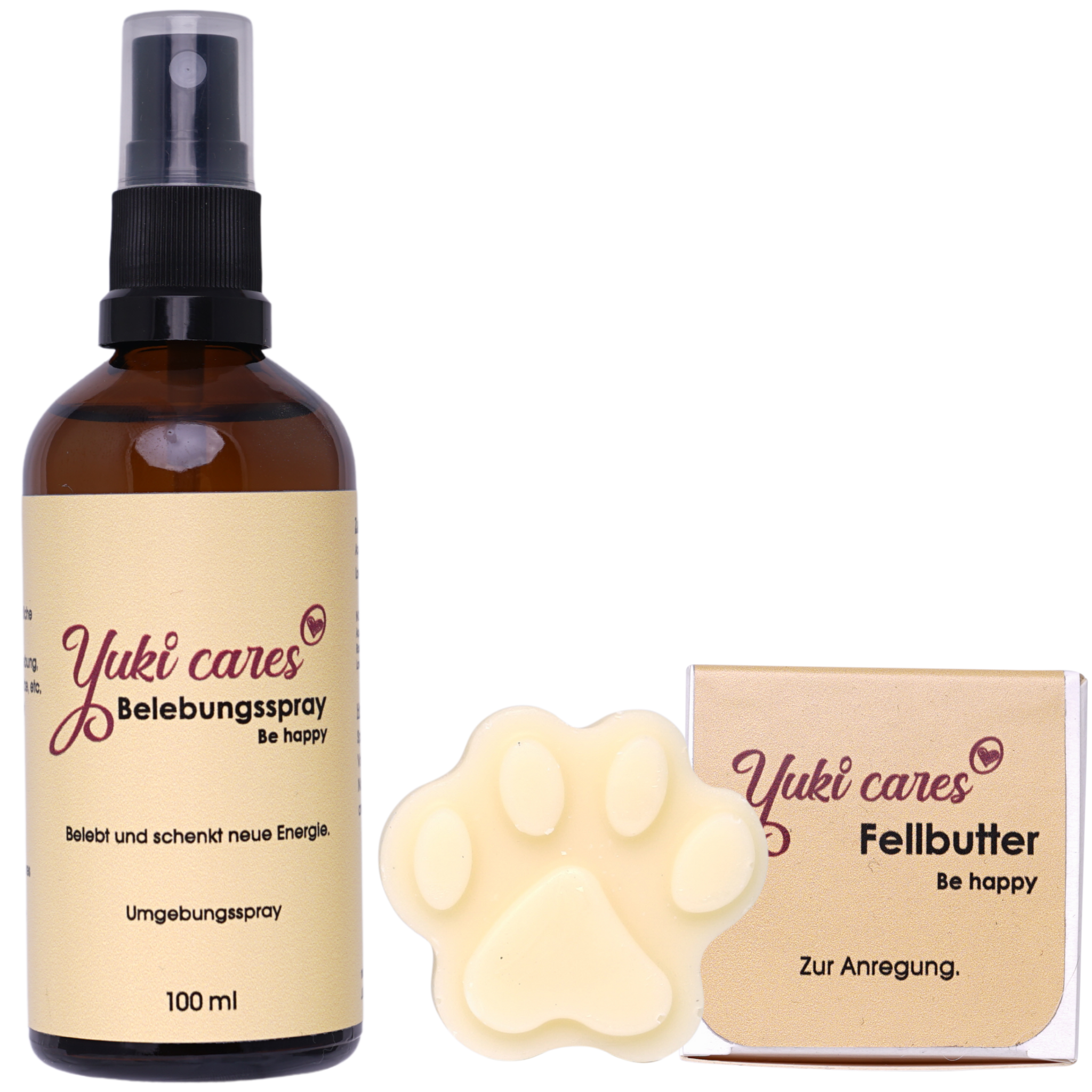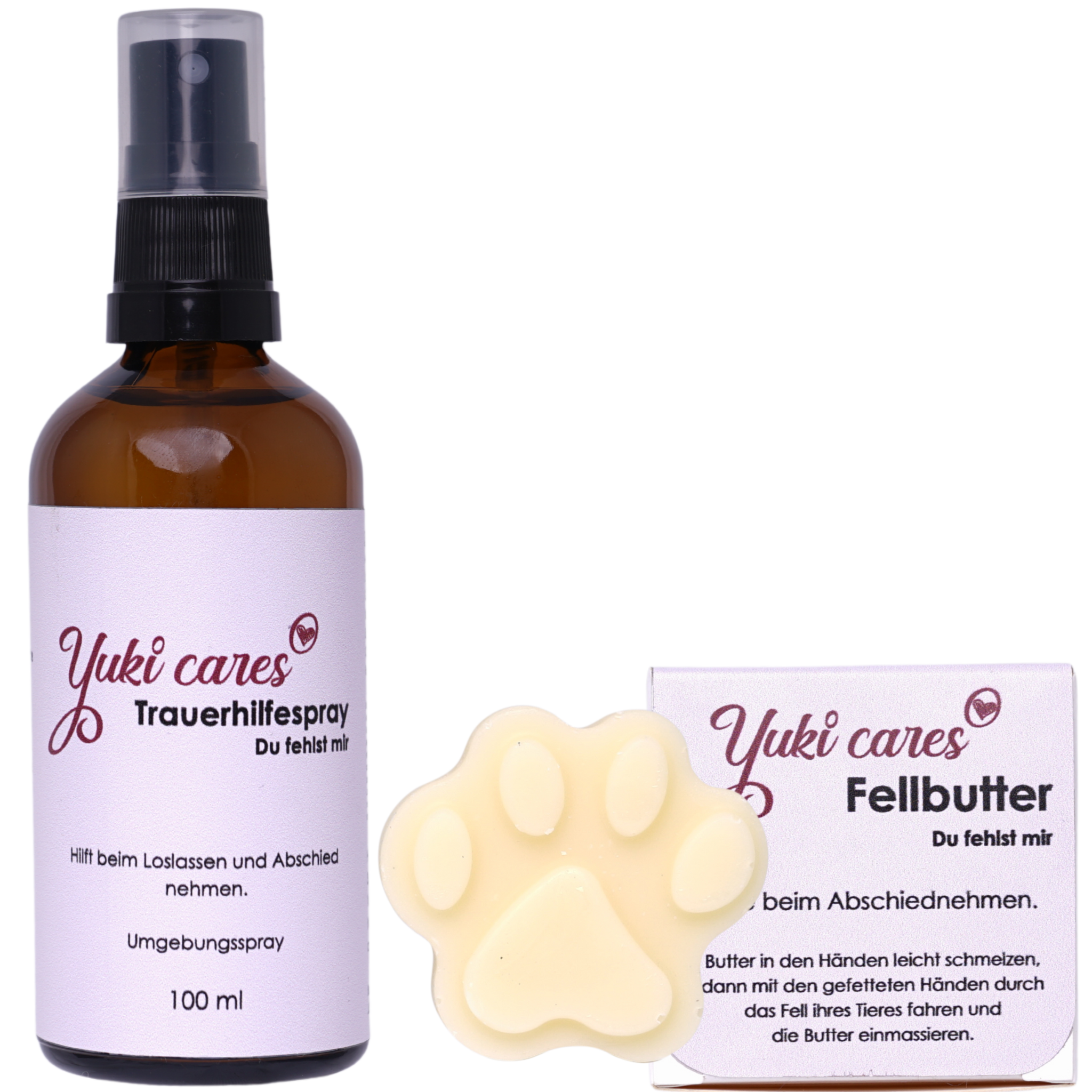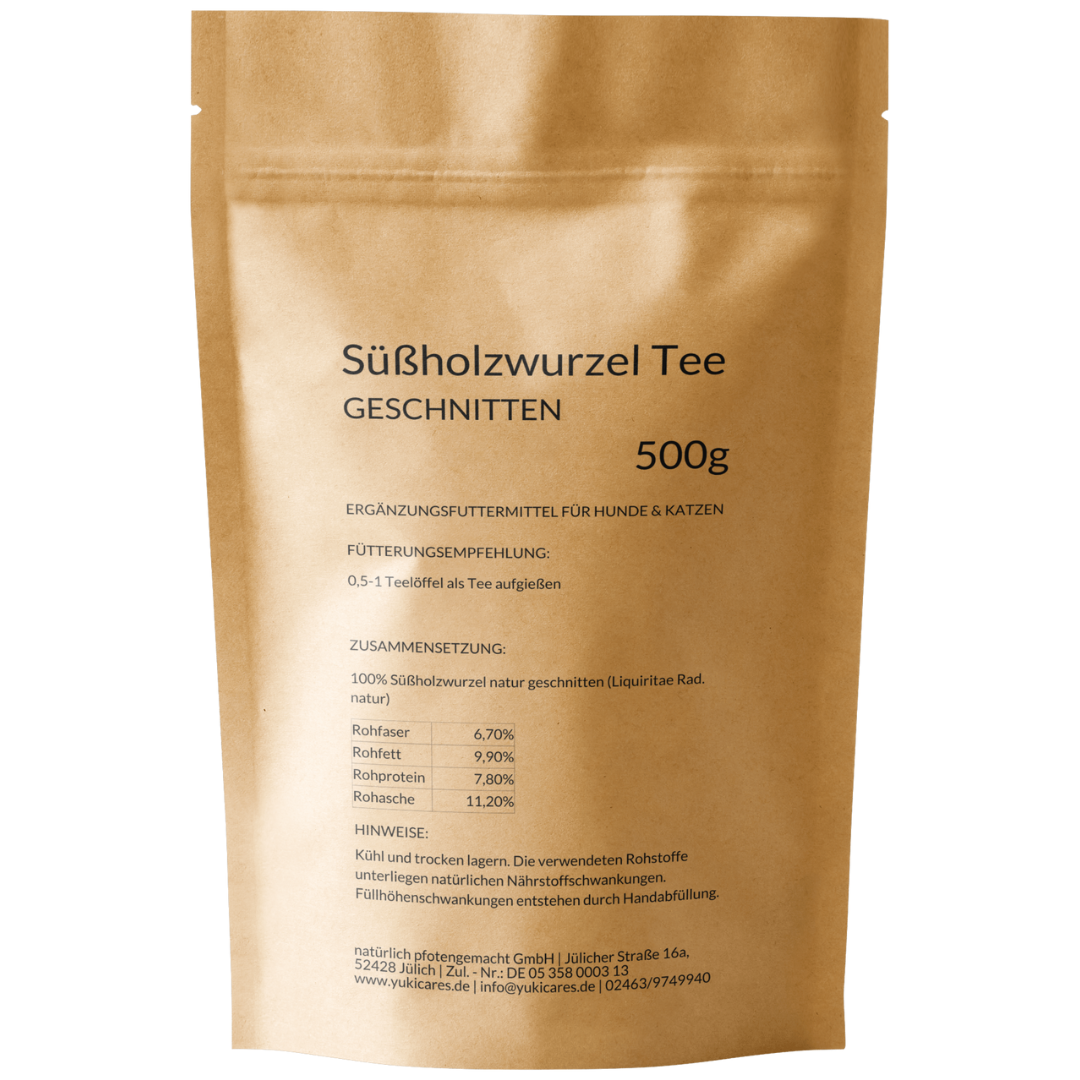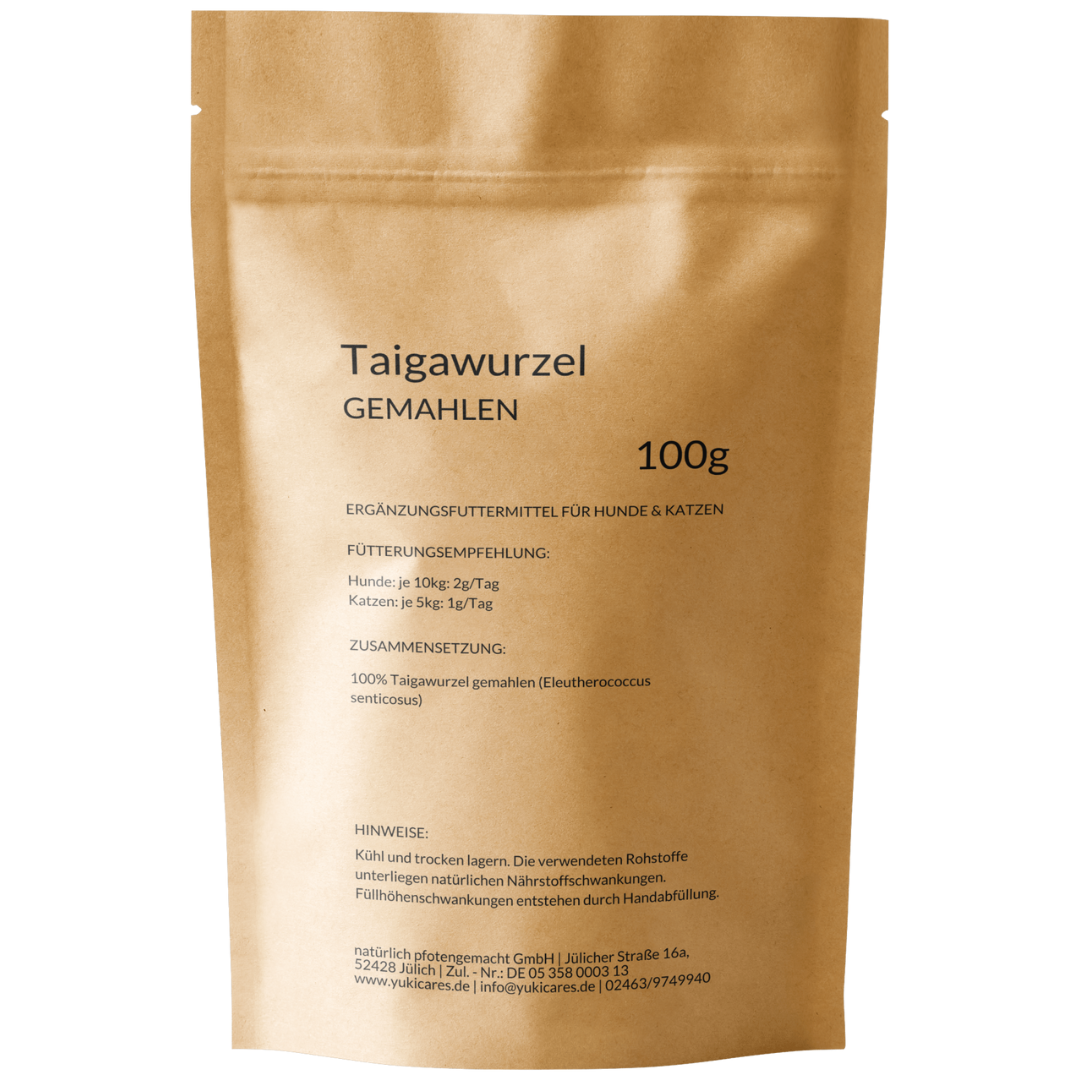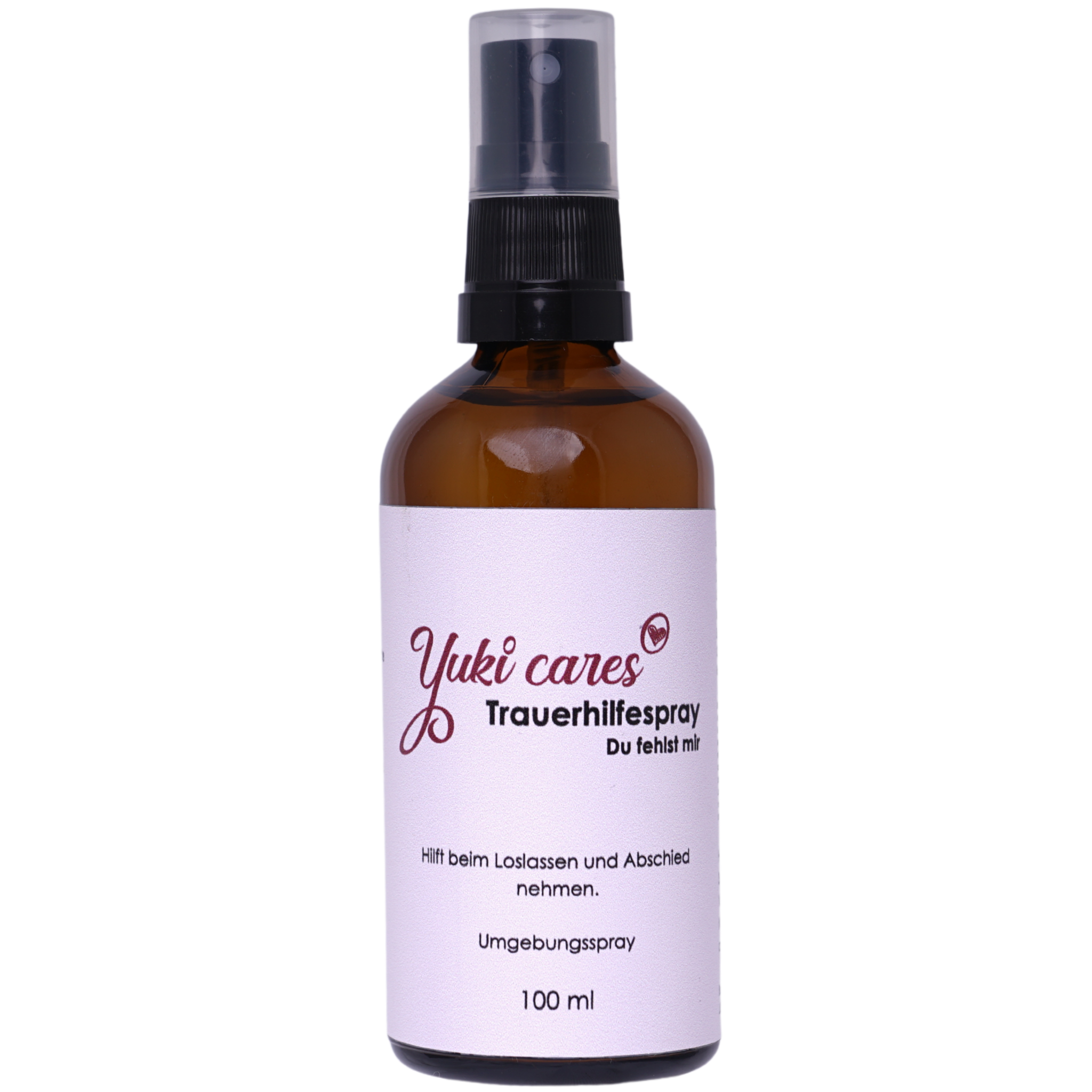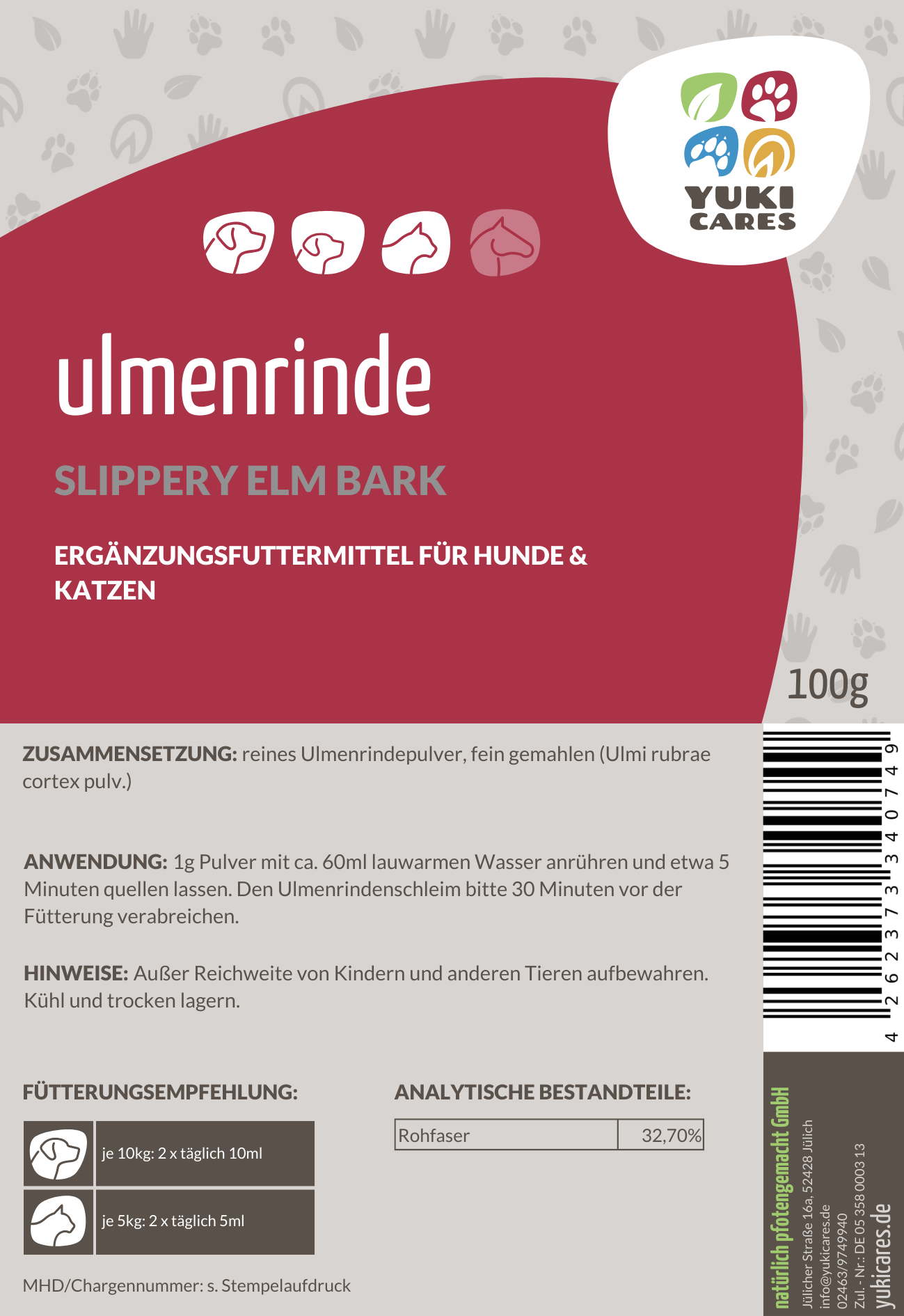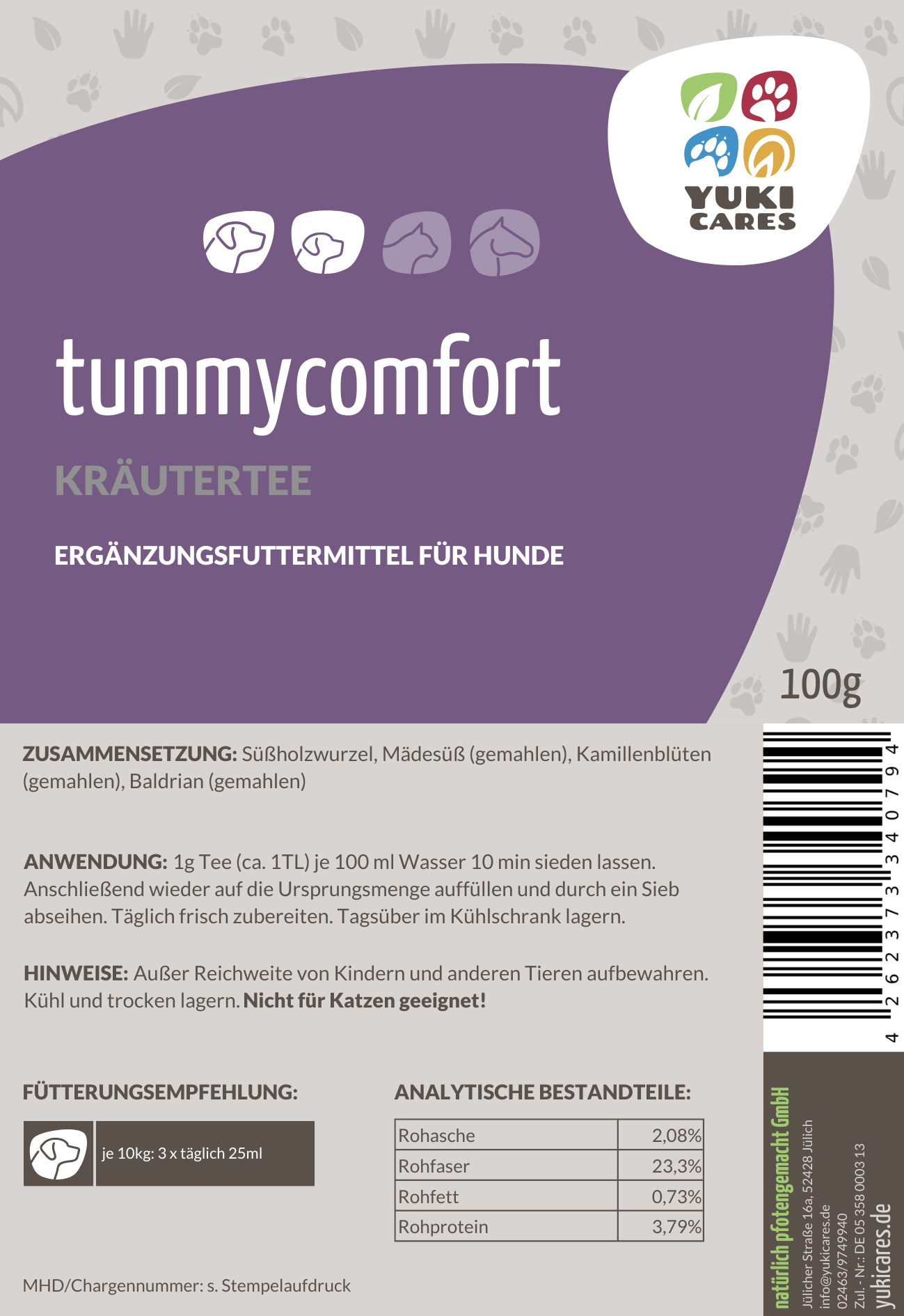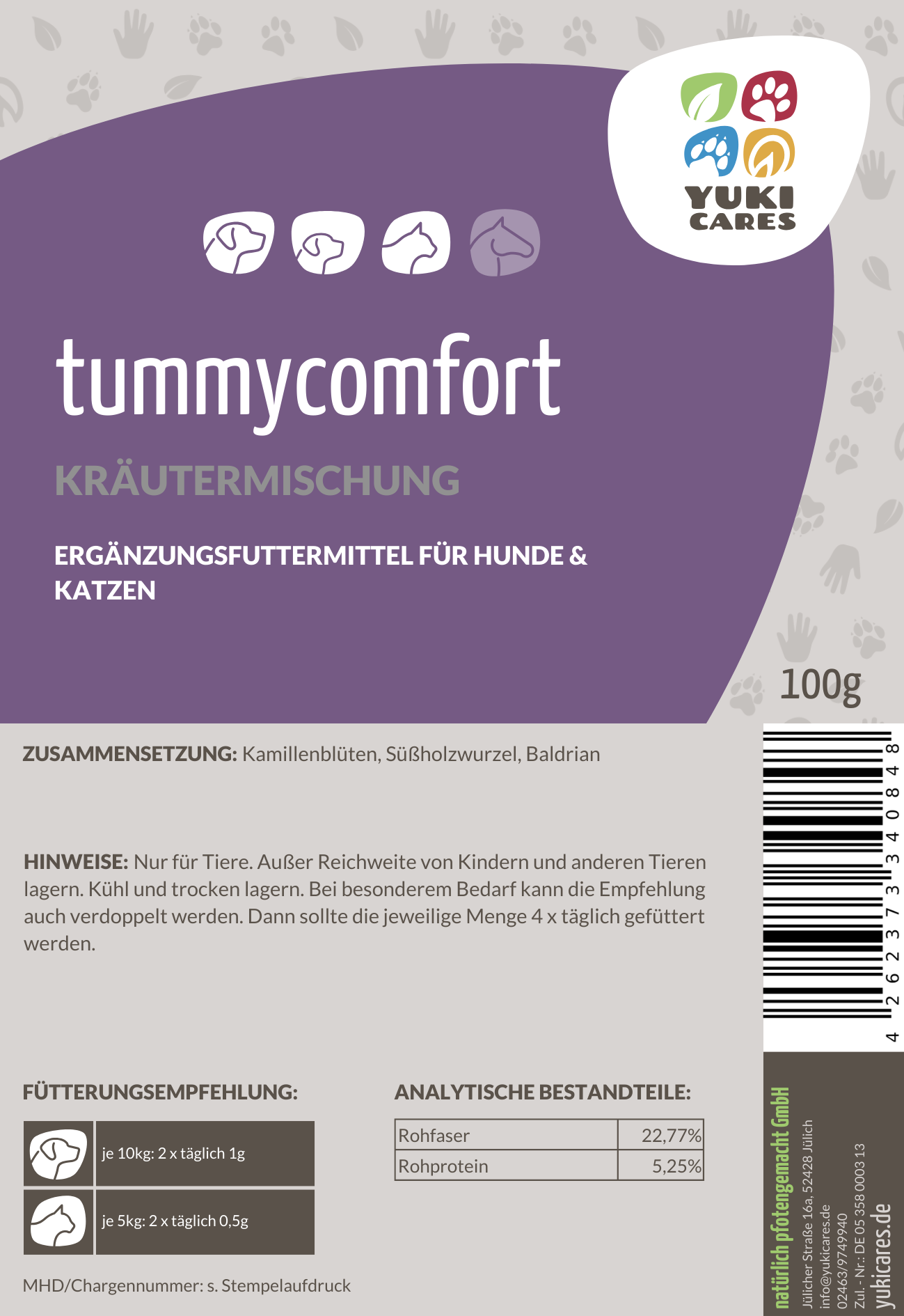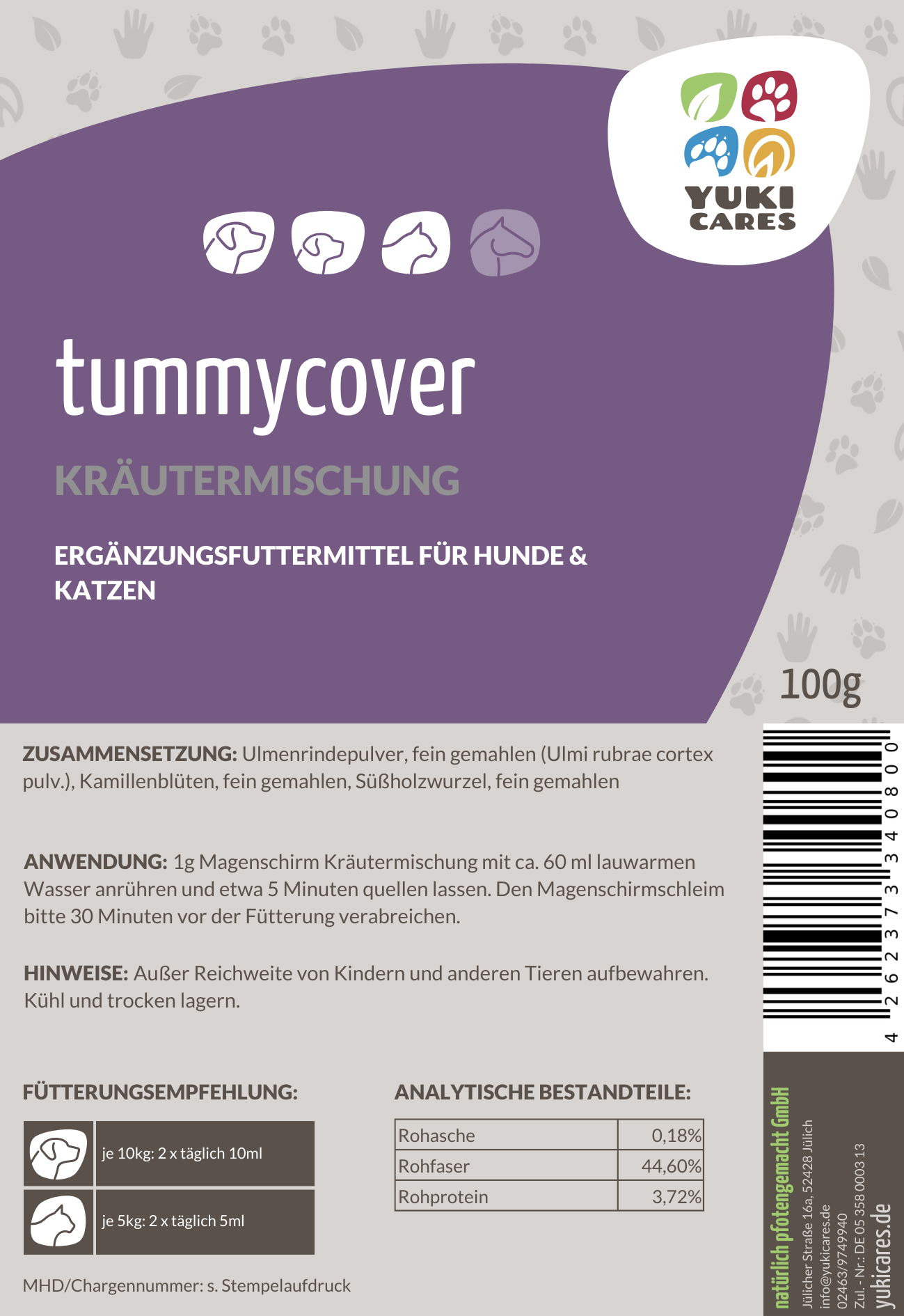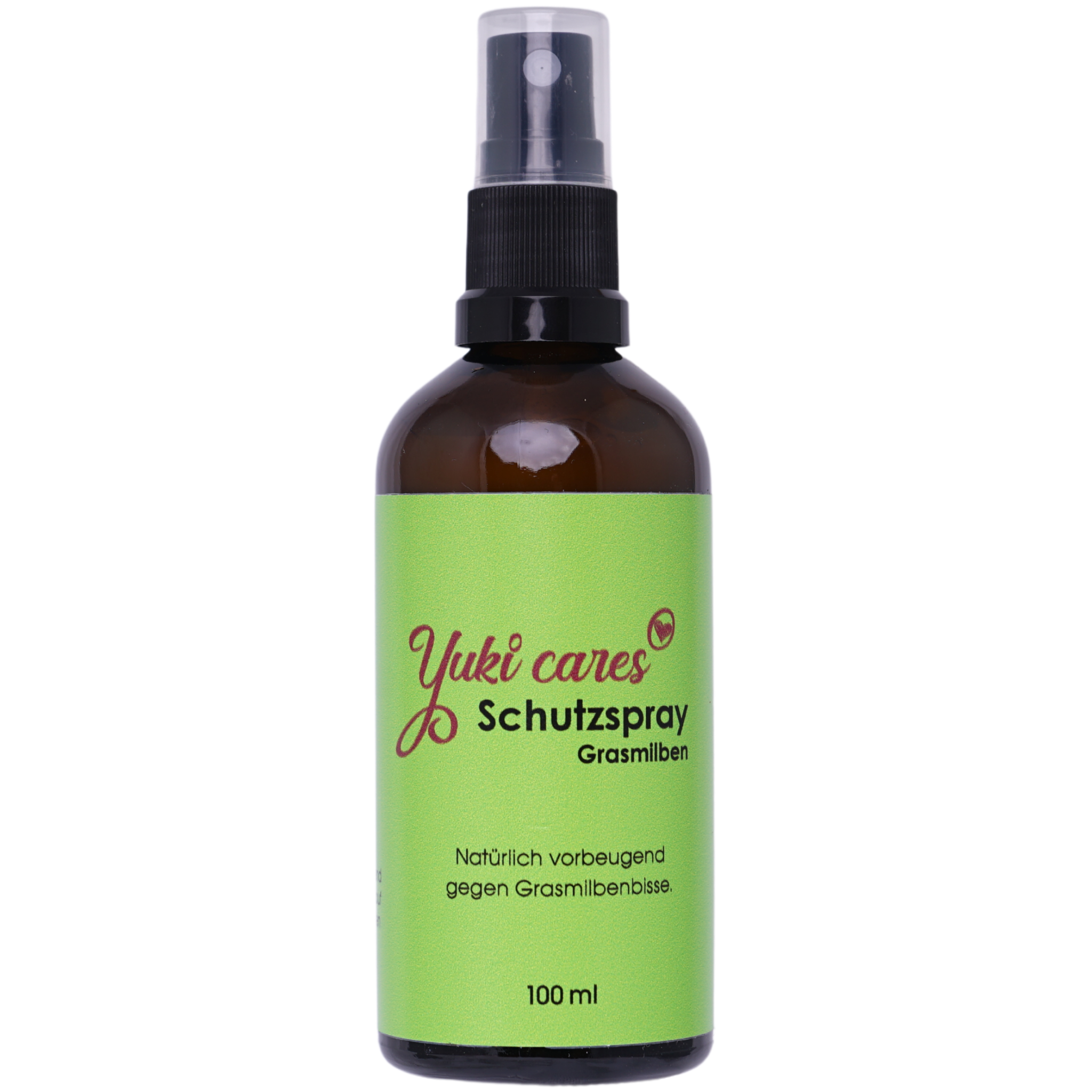These annoying insects can be a problem for dogs with erect ears in certain regions. You may already have experience with "biting" flies. Humans can protect themselves with long pants and a long-sleeved T-shirt. Your dog's erect ears are unprotected. For horses, a fly net with fabric ears is often used.
These "bloodthirsty" flies settle on the tips of the ears and on the edges of the ear flaps. Your dog tries to get rid of these pests by scratching. The flies cause small open sores, and the scratching causes further skin irritation, even leading to an itchy ear. Hair loss and minor swelling may also occur in this area.
Cleaning, caring, and protecting can help. Essential oils make the environment unattractive to flies. These natural substances protect against further infestation. A conditioning product soothes skin irritations and reduces itching. Minor injuries can heal. Once the skin's appearance returns to normal, the hair on the edges of the ears will grow back.
Inhaltsverzeichnis
Itchy ears are unpleasant for your dog, and they'll try to relieve the discomfort by constantly scratching. This only makes the problem worse. The skin becomes even more irritated. The claws can cause injuries to the outer ear or ear canal. In the worst case, your dog will get bloody ears. To prevent this from happening, you should react as early as possible and look for the cause.
Our Allergo Control ear care provides quick relief.
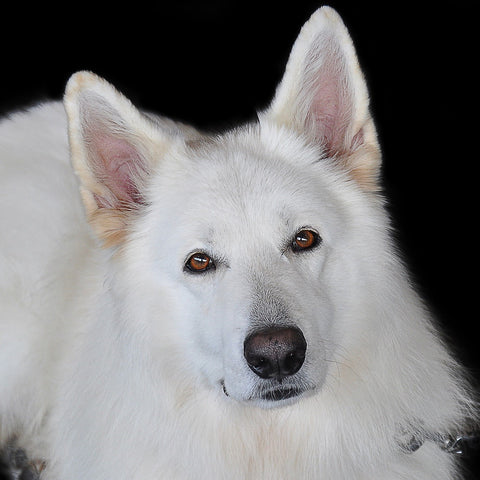
How does itching (pruritus) occur?
Neurotransmitters such as serotonin and histamine stimulate nerve fibers. This is usually a normal process. If the release of either of these substances is significantly increased, the nerve fibers become activated beyond normal levels and report the itchy spot to the brain.
The increase in serotonin and histamine levels can be caused by external influences or by the body's own processes. The dog reacts to the itching by scratching. This provides short-term relief. Irritation of the skin activates other neurotransmitters, which in turn trigger itching. Thus, the cycle begins again.
Serotonin
The neurotransmitter serotonin is responsible for the flow of information in the central nervous system, the intestinal nervous system and the cardiovascular system and is stored there.
histamine
This messenger substance is produced within white blood cells and fulfills its function as a signaling agent for the immune system.
What are the reasons for itchy ears?
In most cases, the increased release of histamine is responsible for the itching. This activity can be caused by, among other things,
- Parasites
- Skin fungi
- Allergies
- bacteria
Below, we'll discuss the individual points. We'll inform you about symptoms, treatment, and care for dog ears.
For some animals, regular cleaning is essential to prevent the problem from escalating. Our mild, alcohol-free ear cleaner is the perfect choice.

Foreign body in the ear
A foreign body can end up in the ear quicker than you think. Whether it's sand on the beach or a burr after a walk in the fields, if your dog suddenly shakes its head or rubs its ear on the carpet, you should check its ears. If in doubt, it's better to have a therapist take a closer look into your pet's ear canal with an otoscope, as burrs in particular tend to work their way deep into the ear and cause nasty infections. If you think it's just some dirt or sand, you can also first try clearing the ears with Disinfect Ear Cleaner. You'll notice if it's too deep and your dog needs help.
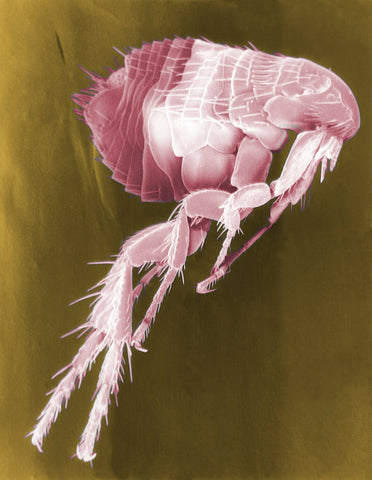
Fleas
You can quickly identify a flea infestation in a short-haired dog. Use a flea comb to comb the dog. This will likely reveal either adult fleas or small, black particles (flea droppings). It's a bit more difficult with long-haired dogs. A flea habit can be helpful here. They like to scurry behind dogs' ears or run across long noses. With good observation, you'll find them. Of course, fleas don't just itch the ears, but other parts of the dog's body as well.
Make sure there are no fleas on or in the ears. This is especially important for dogs with floppy ears. Check the inside of the ears and the beginning of the ear canal. Cleaning the ear canal should be done carefully. Use a dog ear cleaner and a soft cloth or swab. Never use ear swabs!
Fighting fleas
- Due to the flea life cycle, treatment lasts about six weeks. Flea treatment must cover the entire dog's body. For short-haired dogs, use diatomaceous earth. Be sure to include the ears. Be careful, though: this powder should not be inhaled directly. Its drying properties will irritate the mucous membranes. For long-haired dogs, neem oil is a better choice. Cats do not tolerate this active ingredient. This is important if you have a mixed cat and dog household. During the treatment phase, comb your dog frequently to check for any surviving fleas.
- All dog blankets and dog beds must be washed. If your dog often sleeps on the sofa or rides in the car, all washable items must be machine washed at temperatures up to 60°C.
- For the area around the dog park, on carpets, car seats or sofas, use either diatomaceous earth or essential oils (e.g. our coconut spray ) to combat fleas.
Fly
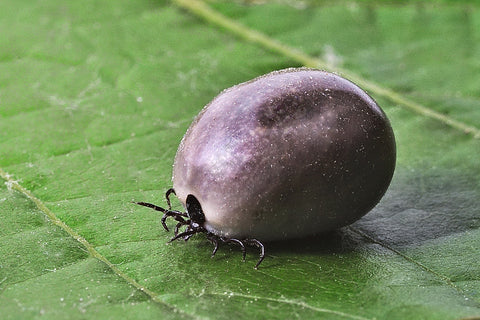
Ticks
If ticks are causing itchy ears, this problem can be resolved quickly. Examine the ear. Once you've found the tick, carefully remove it with tick tweezers. You can then apply an anti-itch product to soothe the skin. The Yuki cares insect stick is ideal for this.
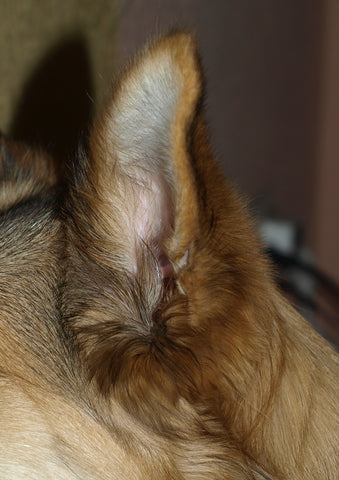
Ear mites
If your dog is infected with ear mites, their behavior will be somewhat more complex. Ear mites like to nest in the outer ear and the external ear canal. Your dog tries to get rid of the itching and the parasites by "gently" scratching with its hind paws. It will also frequently shake its head or tilt it. In dogs with erect ears, the ear is partially stretched out to the side. One or both ears may be affected. Another noticeable change in the color of the earwax is the increased production of earwax, and the secretion takes on a blackish-brown and crumbly consistency. The following external changes are also possible:
• Redness of the skin in the auricle area
• Hair loss
• Abrasions and crusts in the ear area (ear canal, auricle)
How to clean your dog's ear properly
You should take action before your dog injures the ear area with its claws. These injuries can also introduce bacteria and cause an ear infection. This should definitely be treated by a veterinarian. You can combat ear mites by cleaning and caring for the ear.
- Dogs don't like ear care very much. Try to take advantage of a quiet moment and a relaxed situation.
- The first step is to clean your ears, or rather the outer ear and ear canal. You drip a little liquid (e.g., our ear cleaner ) into the ear canal. Then you massage this area. This distributes the cleaning drops throughout the ear canal. Using a soft swab or something similar, you carefully clean the ear canal. The swab will turn brown, and you will see small, black crumbs. Use a care product with anti-itch properties on the outer ear (e.g., Allergo Control ear care ). You should repeat this process frequently. In severe cases, several times a day.
- Please pay attention to the amount of cleaning fluid you use. Follow the manufacturer's instructions. For sensitive dog ears, it's better to use less than more. If there is no improvement after several applications, you should consult your veterinarian.
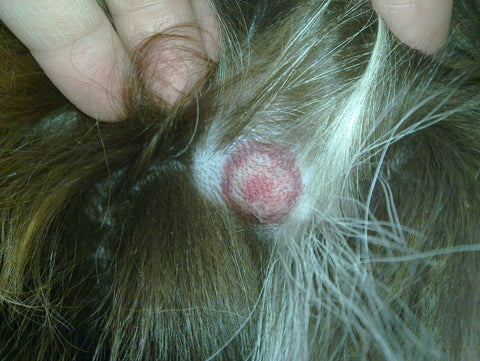
Skin fungi
A fungal skin infection is caused by spores. These spores can settle on the dog's skin and coat. A fungal skin infection can
• Redness (circular)
• Hair loss (circular)
• Itching
The fungal skin disease (dematophytosis) can occur in the areas
• Face
• Ears
• Forelimbs
If left untreated, the fungus will spread across the dog's body.
Not every type of fungus can cause an infection. Infectious species include:
1. Microsporum canis
2. Trichophyton gypseum
3. Trichophyton mentagrophytes
The most important thing to note here is that these are zoonotic diseases. Therefore, transmission from dog to dog and from dog to human is possible. Therefore, you should be especially careful in a household with small children.
yeast fungus
A certain amount of yeast is part of the dog's body. A normal immune system keeps the number of yeasts constant. A yeast infection can be
- weak immune system
- overactive immune system
arise.
Itchy spots and an unpleasant smell (musty, pungent) are symptoms of yeast infection.
An overactive immune system primarily triggers allergic reactions. This increases the concentration of yeast. Check the ingredients in your dog food. Excessive sugar content creates the ideal breeding ground for yeast. The ingredients in your dog food do not contain precise information, so this does not resolve the problem. Keep in mind that carbohydrates convert sugar, including:
- Oats
- Wheat
- potatoes
- sweet potatoes
- corn
- rice
Yeast problems caused by food can be combated with an anti-yeast diet. In addition to low carbohydrates, you should also avoid the following vegetables:
- celery
- Berries
- pumpkin
- Carrots (cooked)
- cabbage
- paprika
In addition to changing the diet, the affected areas of the body must be disinfected and cleaned. This also applies to the dog's ears. Cleaning with an antifungal agent should be carried out as described under "Mites."
A mixture of water peroxide and vinegar can also be used for disinfection and rinsing. This is not recommended for black dogs (risk of bleaching), and it's a rather aggressive mixture that's too strong for many dogs. Colloidal silver is also a solution. In this case, a veterinary practitioner must determine the dosage and mixture on an individual basis.
Malassezia
Malassezia pachydermatis is also a yeast fungus. The presence of this yeast species in limited quantities is normal for dogs. Malassezia dermatitis occurs as a secondary disease to another skin-damaging disease. Sometimes only the external ear canal is affected, which is then referred to as Malassezia otitis. A defect in the dog's skin can be caused by
- Parasites
- Allergies
- Hormonal diseases
- Medications
- immunodeficiency
Increased moisture in skin folds and drooping ears can also promote the development of Malassezia.
This clinical picture includes:
- itching
- Shaking head
- reddened skin areas
- rancid smell
- affected areas are greasy and oily
Malassezia infestation can be detected by examination under the microscope.
Treatment
- The cause of the main disease must be found, otherwise the infection caused by Malassezia can recur continuously.
- In collaboration with the veterinarian, treatment with an antifungal medication is administered for three to six weeks to combat Malassezia. The ear drops must be instilled into the ear canals. Various studies have shown that tea tree oil can be used successfully to treat Malassezia dermatitis. This active ingredient should have a concentration of between five and ten percent and is available in ointments and gels.
Food allergy
If the above-mentioned reasons for your dog's itchy ears aren't the cause, a food allergy may be the trigger. An allergic reaction to certain ingredients (proteins) in food can also manifest itself as itching or skin irritation. There are two ways to identify the allergy trigger:
• Elimination diet
During this lengthy procedure, family members and friends must strictly adhere to the instructions. Over an extended period, your dog will be fed proteins and carbohydrates that are unfamiliar to his body. The change in food must be made gradually, and the new food should be fed for an extended period. If an improvement in symptoms is noticeable, a "provocation test" can be performed. By keeping a list of positive and negative reactions, the allergy trigger can be identified over time. During this time-consuming process, no treats, chew bones, or leftovers should be fed. Support from a nutritionist is recommended, as consistency and simultaneous intestinal cleansing are very important!
• Allergy test in the colon mucosa
An allergy test can identify the trigger for the allergic reaction relatively quickly. The disadvantage is that your dog must be anesthetized. The treating doctor injects the suspected component (protein) into the lining of the colon. The endoscope can be used to examine the mucosal reaction. If necessary, tissue samples can also be taken.
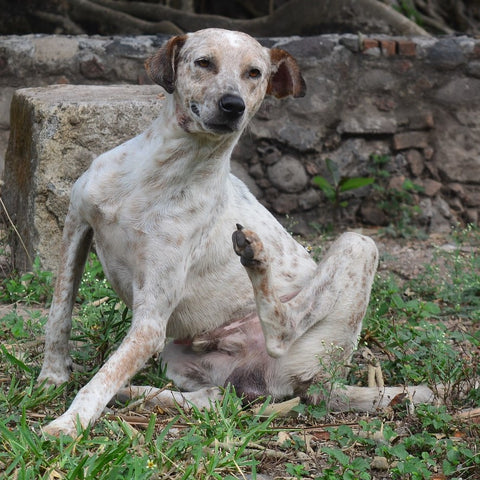
Atopic dermatitis
This condition is also known as environmental allergy. The first signs of the disease can be detected at a young age. The triggers of the allergic reaction are
• Mold
• Dust mites
• Pollen
The skin reaction is visible as itchy patches. Your dog reacts by scratching, nibbling, and licking. The head, muzzle, and ears can be affected, among other areas. The symptoms can be seasonal or year-round. If atopic dermatitis is suspected, you can confirm your suspicion with a blood test (serological allergy test) or skin test. These tests filter out the triggering allergen.
Treatment
The most effective method is desensitization. This treatment is successful in about 70 percent of four-legged patients. During treatment, or if desensitization doesn't work, you can provide relief by washing your dog off the pollen with clean water. If the itching is severe, you can also use Allergo Control Dog Soap for relief. You can also apply certain active ingredients to the affected areas, such as:
- Fennel seeds and chamomile tea
- Yuki cares Allergo Control Lotion for itching
- Yuki cares Skin Repair Lotion to strengthen the skin barrier
- diluted apple cider vinegar
- directly in the ears: Yuki cares Allergo Control ear care
bacteria
Bacteria can cause ear infections. Bacteria always live in the ears and are controlled by the immune system. A compromised immune system can cause staphylococci, for example, to rapidly multiply and cause infections. Otitis externa is a common condition in dogs. It is also known as "otitis externa." The outer ear, including the external auditory canal, and possibly the pinna, are inflamed.
Symptoms
An ear infection is painful. The longer the infection lasts, the more sensitive your dog's ears become. Typical signs include:
• frequent ear scratching or ear rubbing
• crooked head posture
• Shaking head
• Auricle is reddened
• the ears feel hot
• Changes in earwax (thick, foul-smelling, brownish to yellowish)
• Treatment
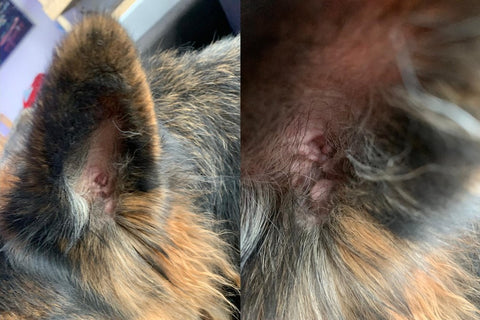
You should always see a therapist if you have an ear infection, because the infection can spread further into the skull if it becomes chronic. Only a therapist can use an otoscope to look deep enough into the ear to assess its extent and possibly determine the cause. An external view, as shown in this photo, is usually not sufficient for a thorough assessment. The therapist will then make the diagnosis and determine the appropriate treatment. In addition to medical treatment, you can provide relief for your pet with colloidal silver and ozonated olive oil.
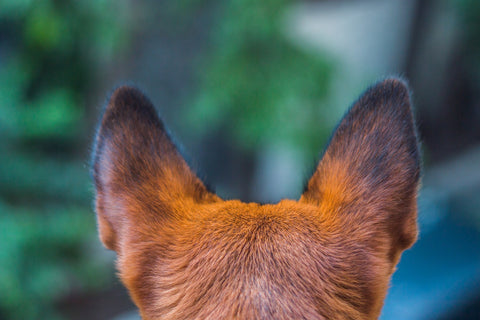
Conclusion
If your dog's ears itch, home remedies can help. This initial statement is correct. However, you should keep in mind that home remedies can alleviate the discomfort and improve the condition. They are no substitute for a visit to the vet. If you can't get the condition under control with home remedies, you should seek professional help. Ear care is an important part of caring for your four-legged friend. Cleaning the ears doesn't take much time, but neglecting proper ear care can be time-consuming and sometimes costly.
Text by Balance Cure Tierheilpraxis & Textbroker / Pamina 2
Photos by Balance Cure Animal Healing Practice & Pixabay


